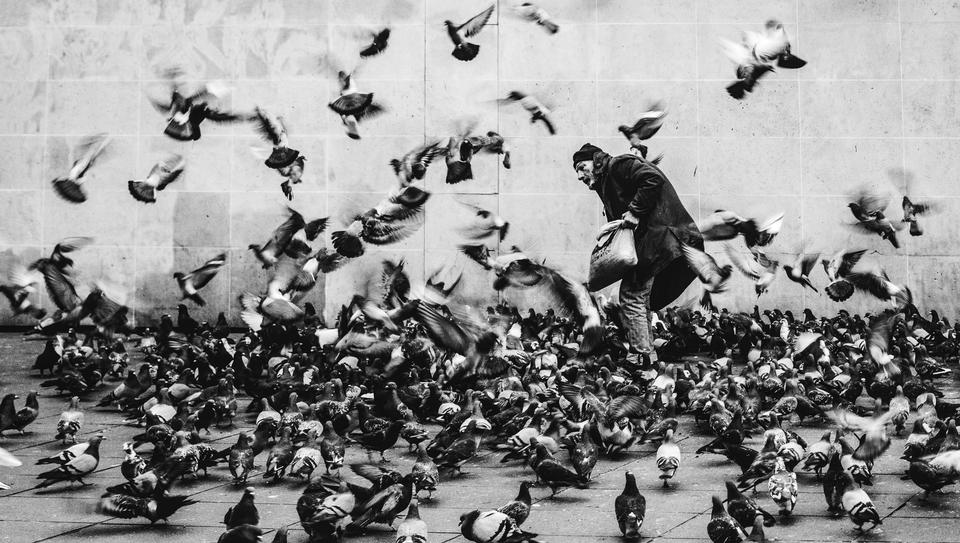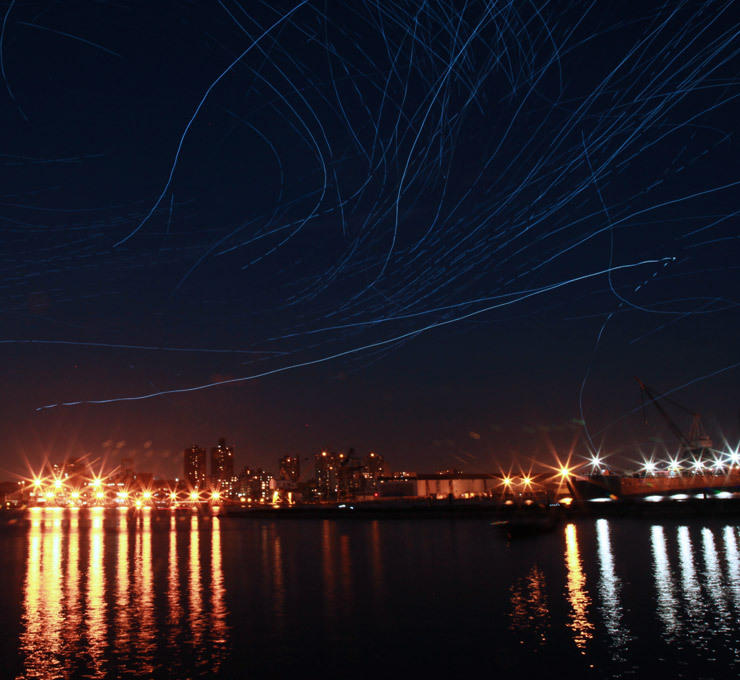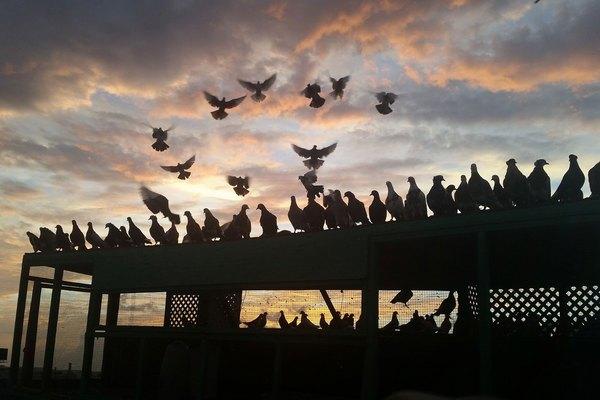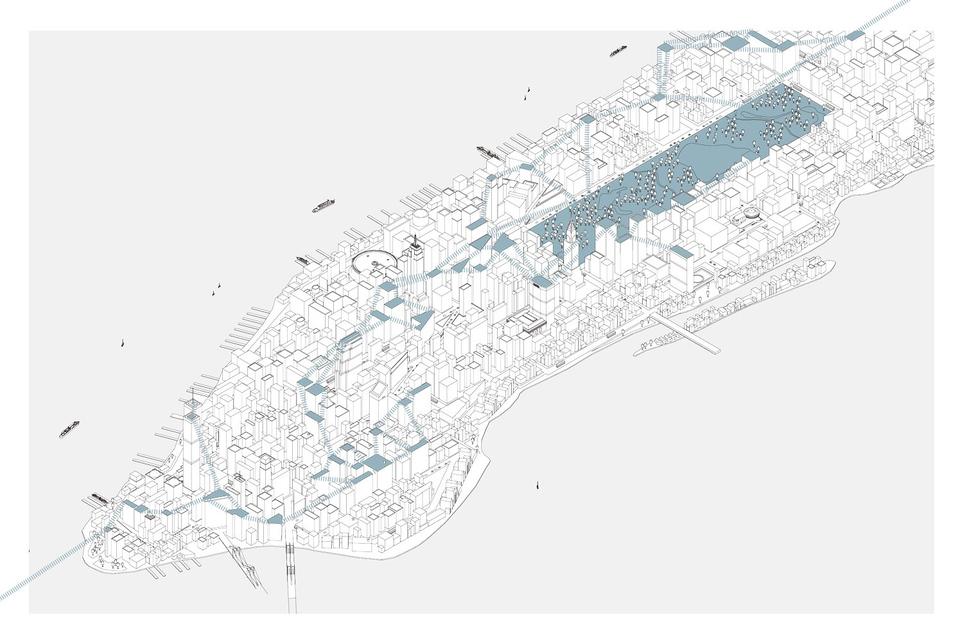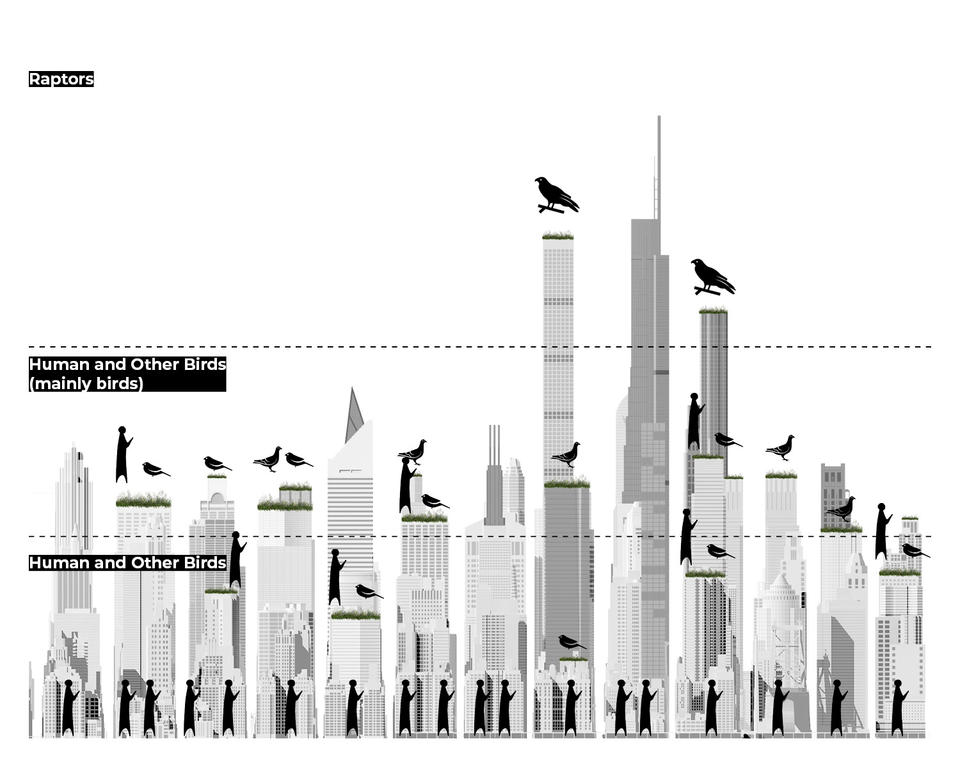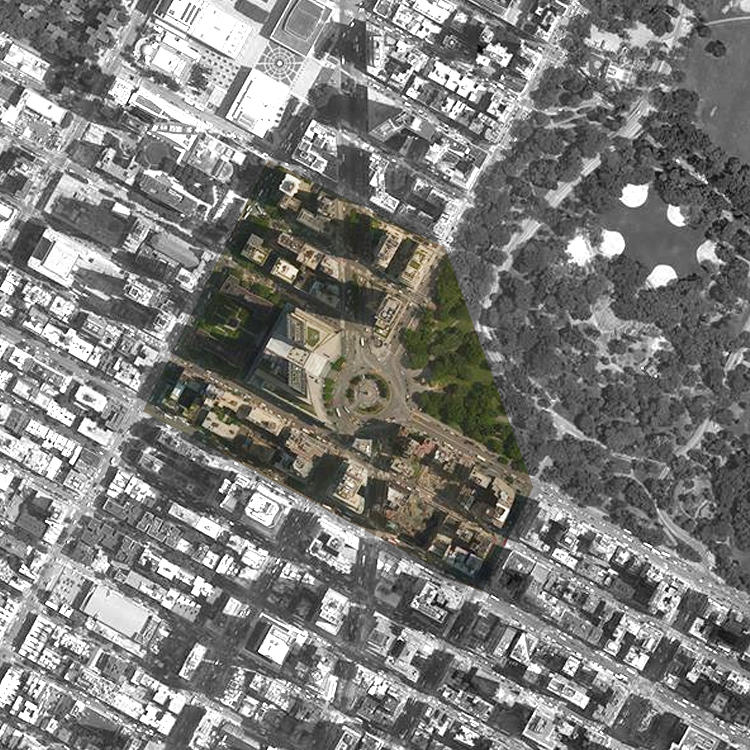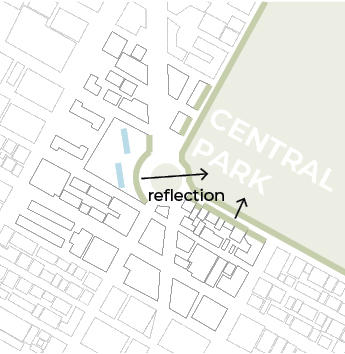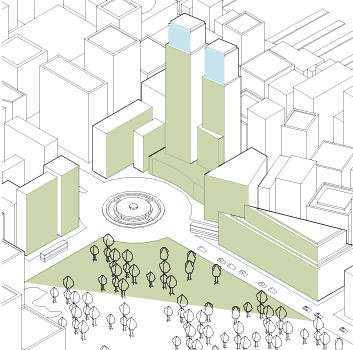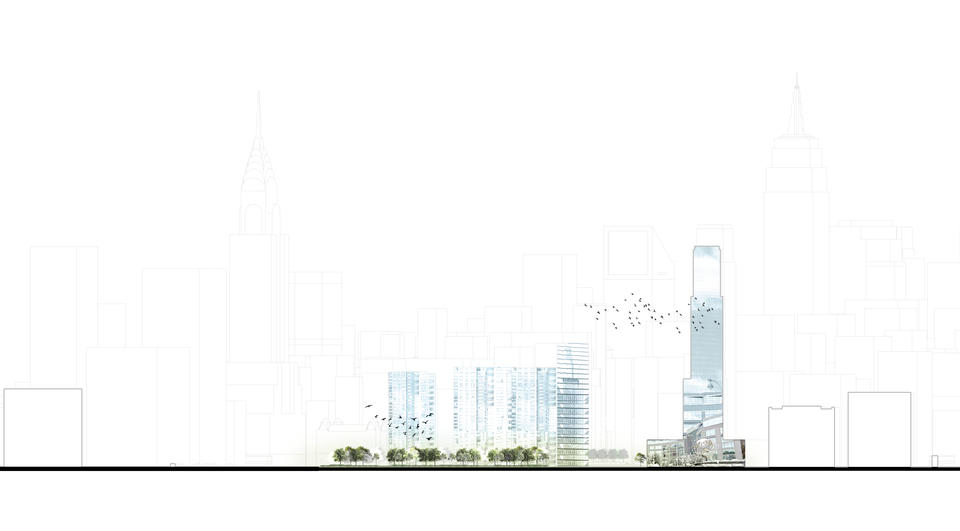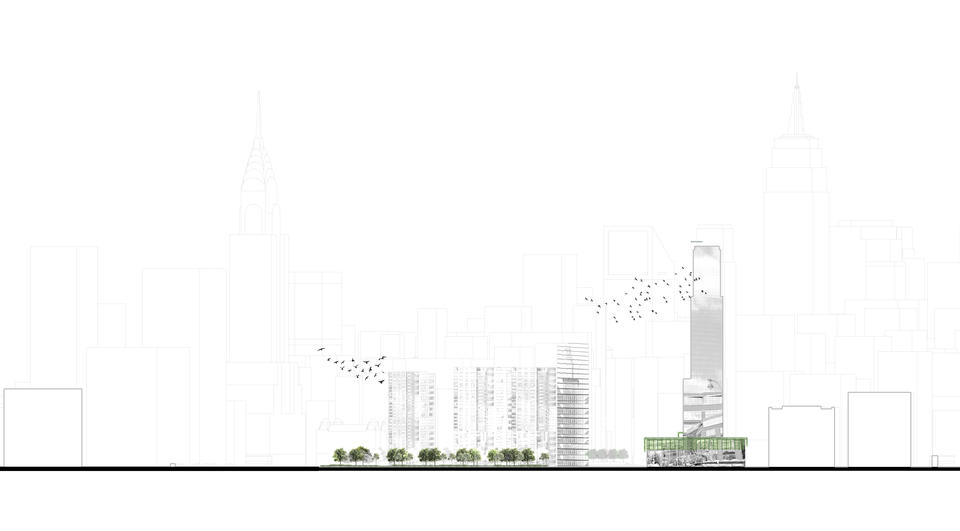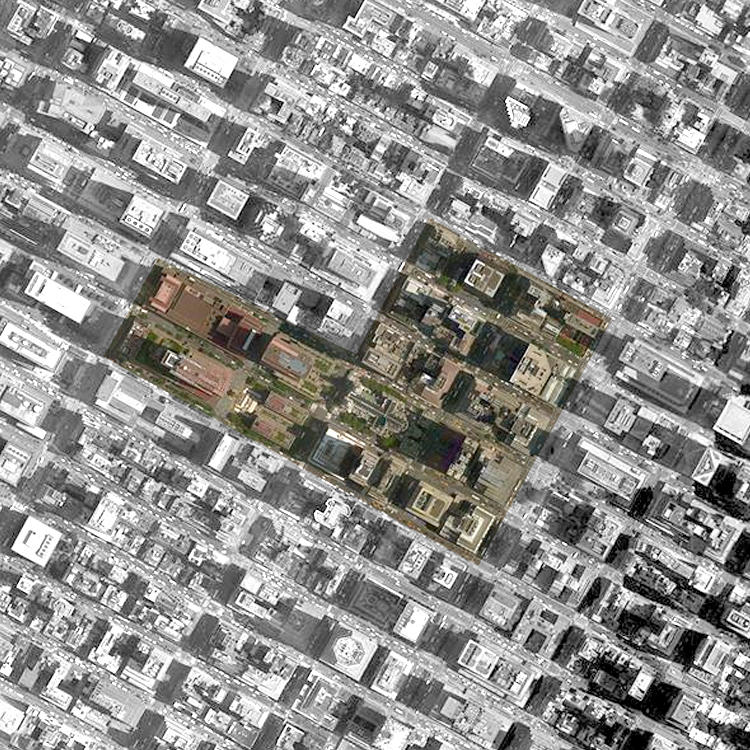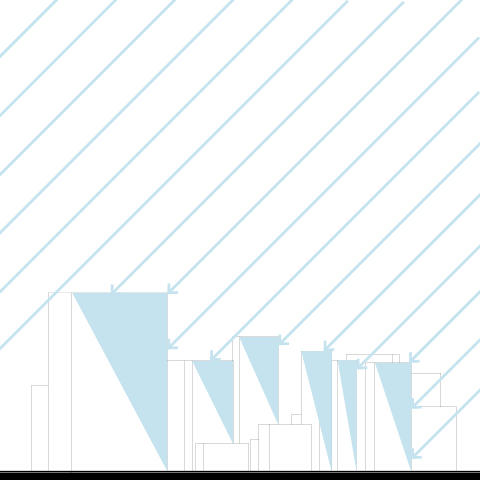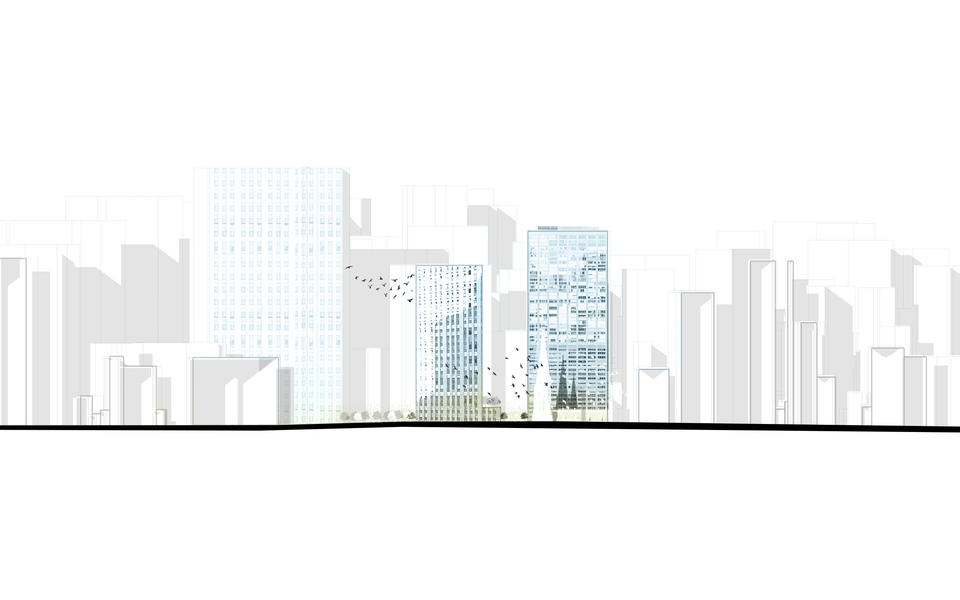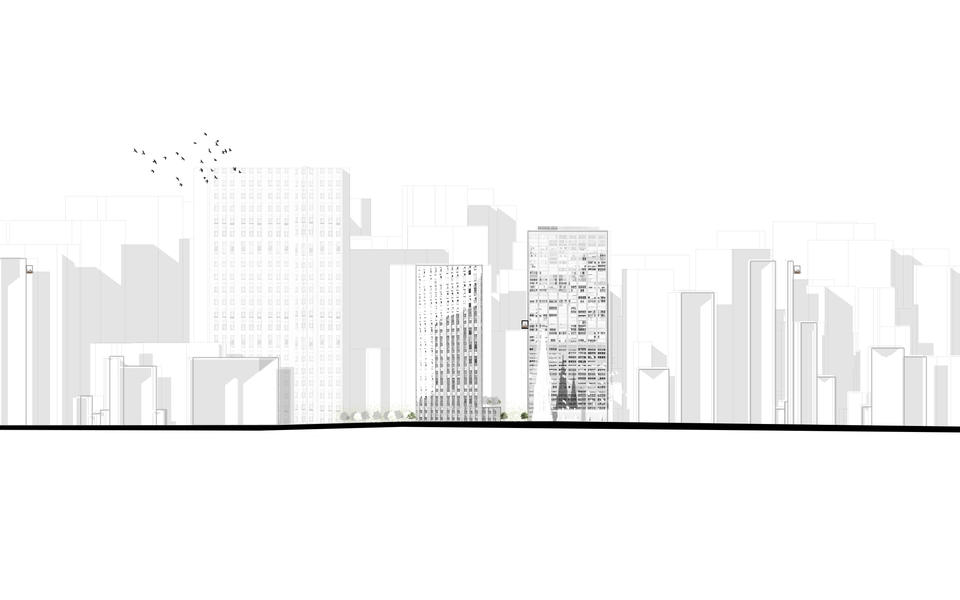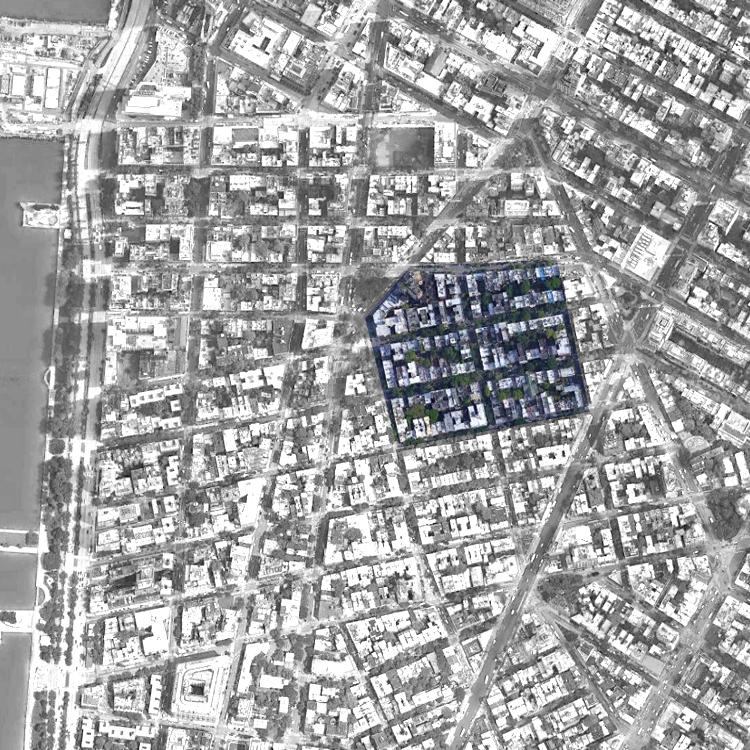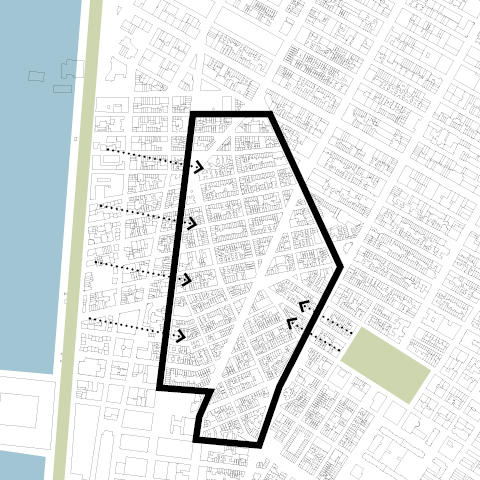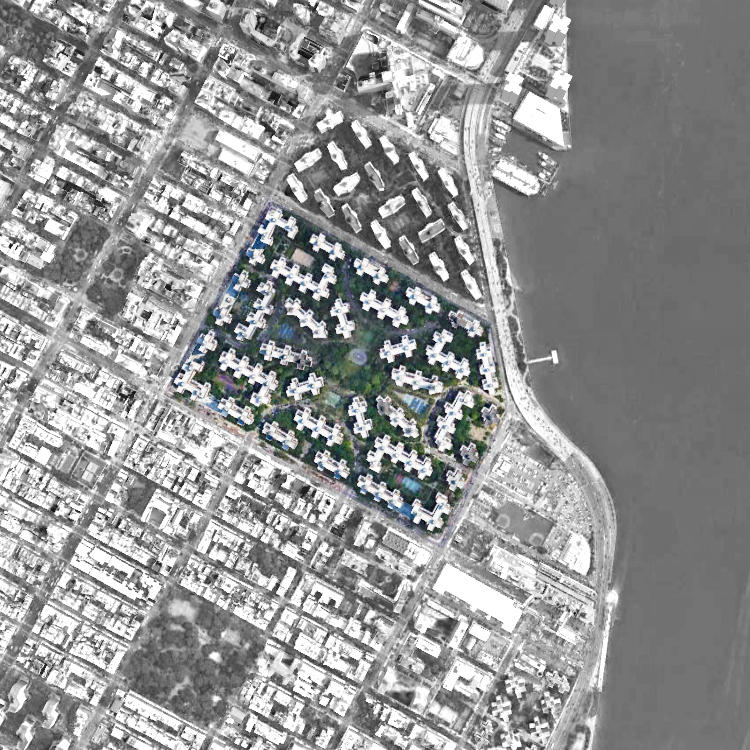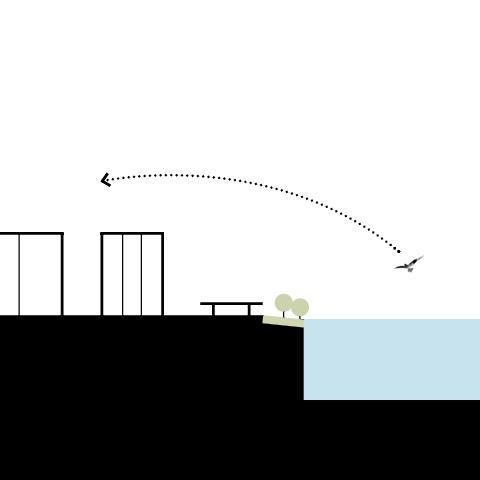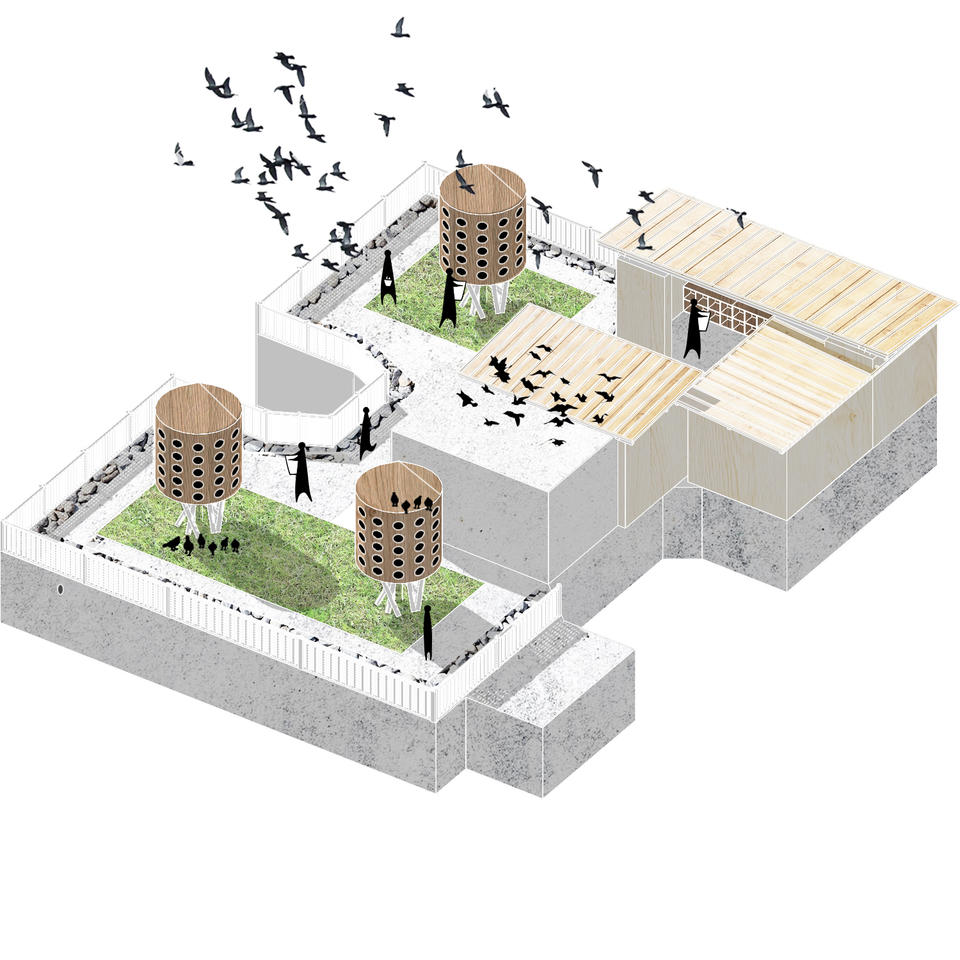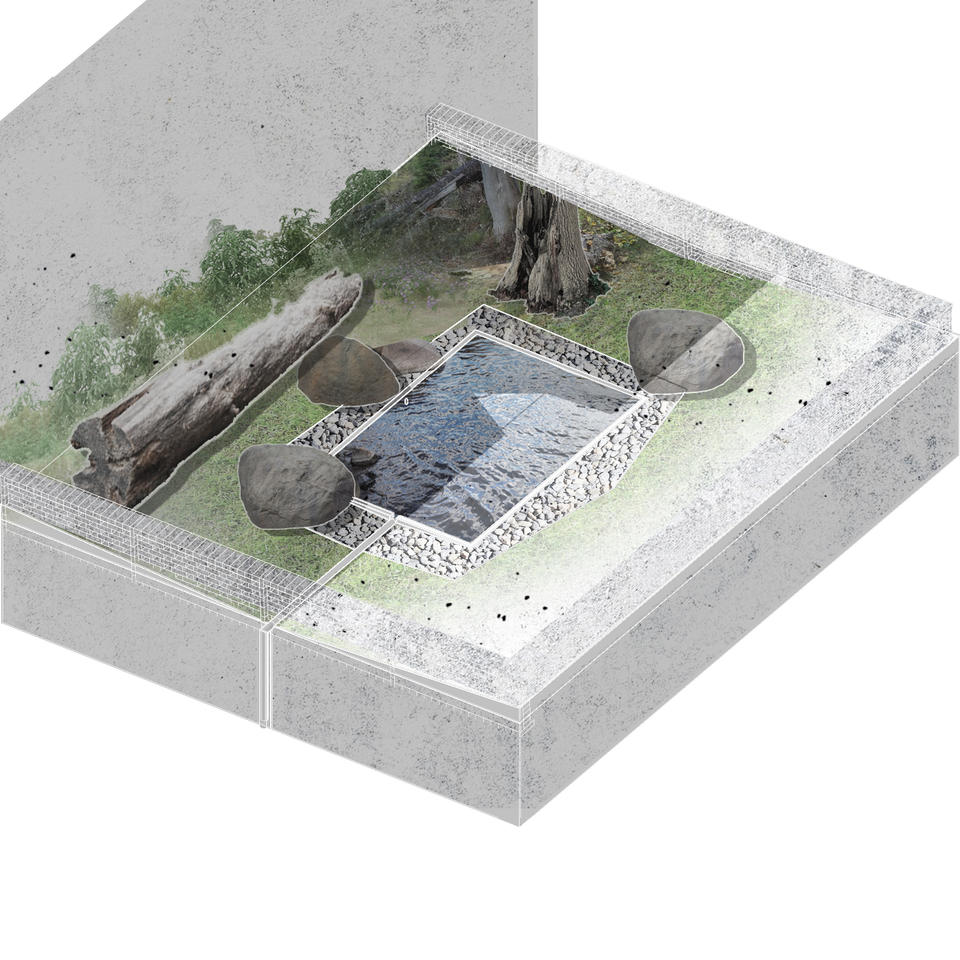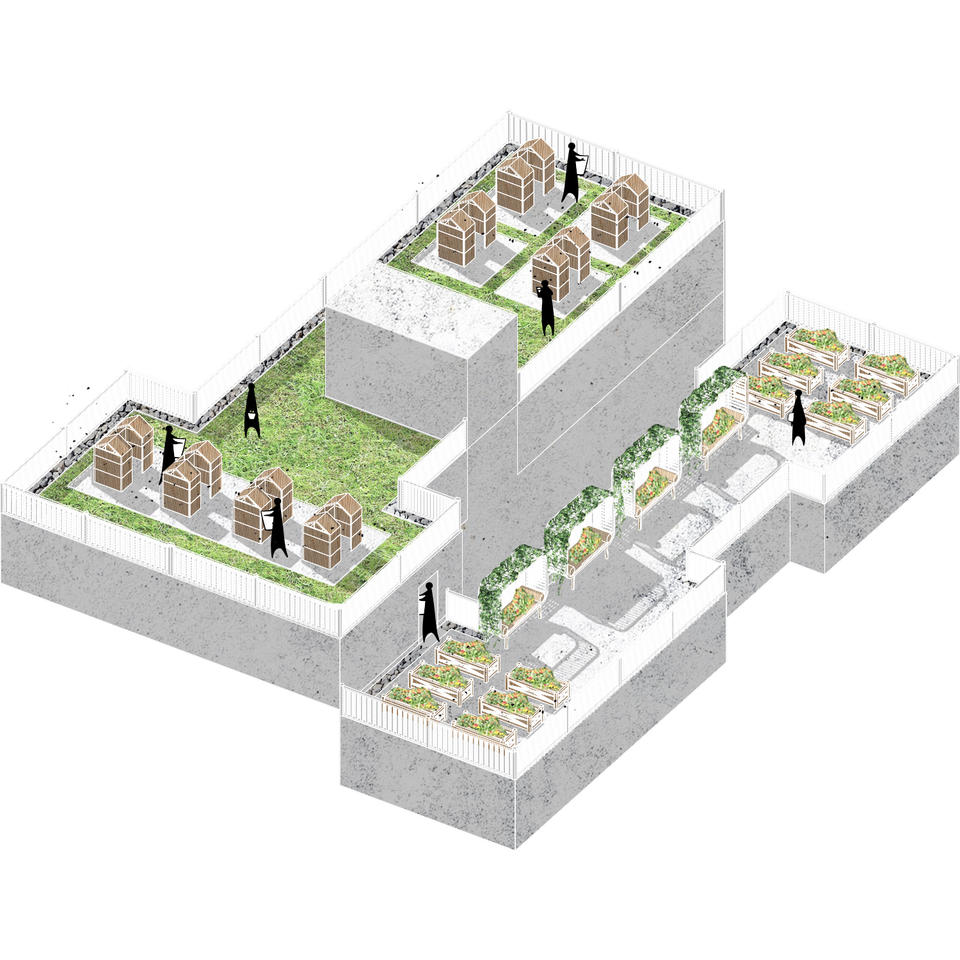ABSTRACT
This project takes the relationship between birds and humans in the city as a starting point and raises questions about the characteristics of the ideal relationship between humans and non-humans in the city. After analyzing Manhattan as an example of typical grid cities, an aerial ecosystem on the rooftops is proposed to answer this question and it forms the beginning of future research. As a toolkit project, I propose design strategies that can be applied to many cities by classifying and analyzing the building types and their suitability for avian habitat. Humans are a part of nature, and cities are a part of ecology. Technology is still advancing, and cities are constantly expanding. Our influence on our surroundings will never be eliminated. As a consequence, we must face them directly and respond to the issues of urban density actively. The design proposals developed in this work aim to awaken the wild in our hearts yearning for nature in cities. Although our lives are overwhelmed by information, when bonds can be built with birds and other non-human creatures, city living is improved by these precious interactions.
BLUR THE BOUNDARIES
Image
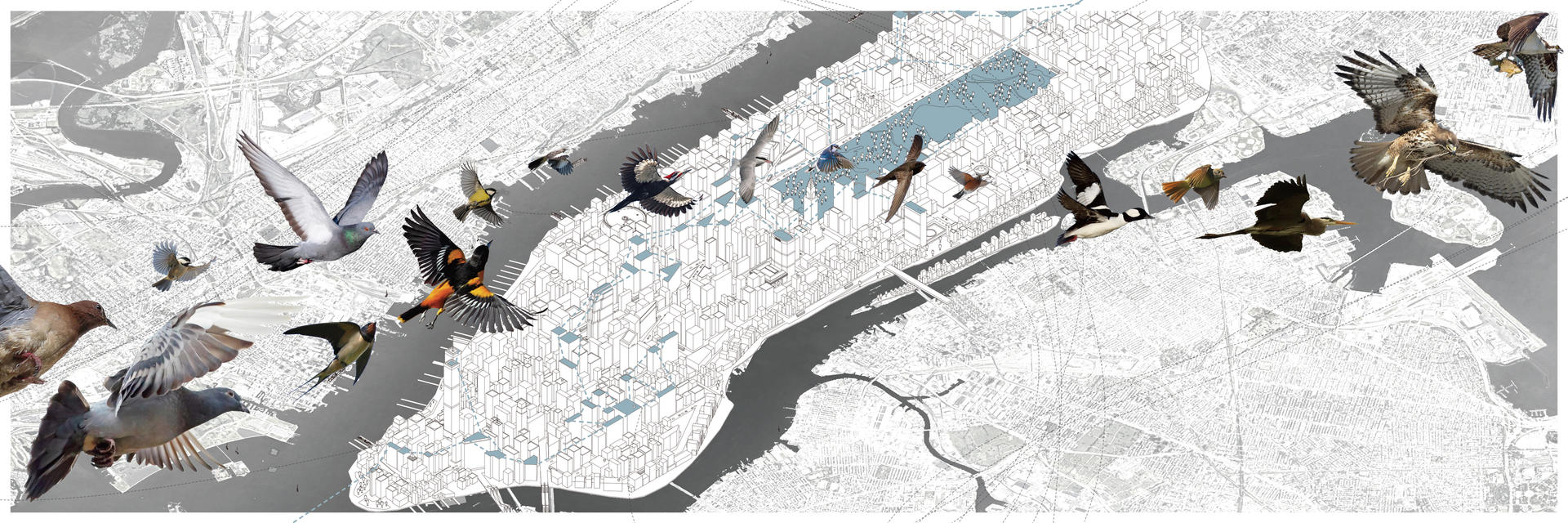
PROLOGUE
Through case analysis and research about landscape utopias, I have gained some inspiration on what characteristics an ideal city should have in modern conditions. In the past, the bustling cities were once rural areas. Between 1880 and 1900, cities in the United States grew at a dramatic rate. We are now living in a highly gridded society. A lot of cities were planned with street oriented grids to make it more suitable for military organization, colonial conquest and political/economical domination. These “grids” exist everywhere: square urban grids, suffocating tall buildings, and overwhelmingly busy lives. These things have stripped human beings from nature to a certain extent, making our connections with other non-human elements no longer as close as before.
In the past, the relationship between humans and birds was very close. Birds with wings were considered to be symbols of freedom because they can move freely high above and through these grids. But now, with technological progress and some changes in social situations, sometimes birds are maligned by humans. Some of their population numbers are too large, and their habits bring disease and filth to the city. Although some birds are still loved for their beautiful feathers and beautiful songs, they are also gradually being forgotten and ignored. Legends and anecdotes about birds have gradually diminished from generation to generation. And the birds that are still struggling to adapt to the city are facing various dangers and difficulties. Birds in the city are not as free as we think. They are also deeply affected by these grids: they face high collision risk in physical condition with so many glass windows reflecting the surroundings.
In this project, my purpose is to re-establish the connection between humans and birds, and use this connection to help both parties break through the uninhabitable boundaries and live better together in this grid society. My goal is to provide people with a pleasing realm in busy cities that is accompanied with birds. I also aim to allow birds to have a broader shelter. At the same time, I am committed to bringing equality back to this bird population, helping those who have been loved but now are hated, like pigeons, to regain the respect they deserve. With all these thoughts in mind, I have established a brand new aerial system on rooftops for the urban environment.
CHAPTER ONE - HUMANS & BIRDS IN CITIES
Image
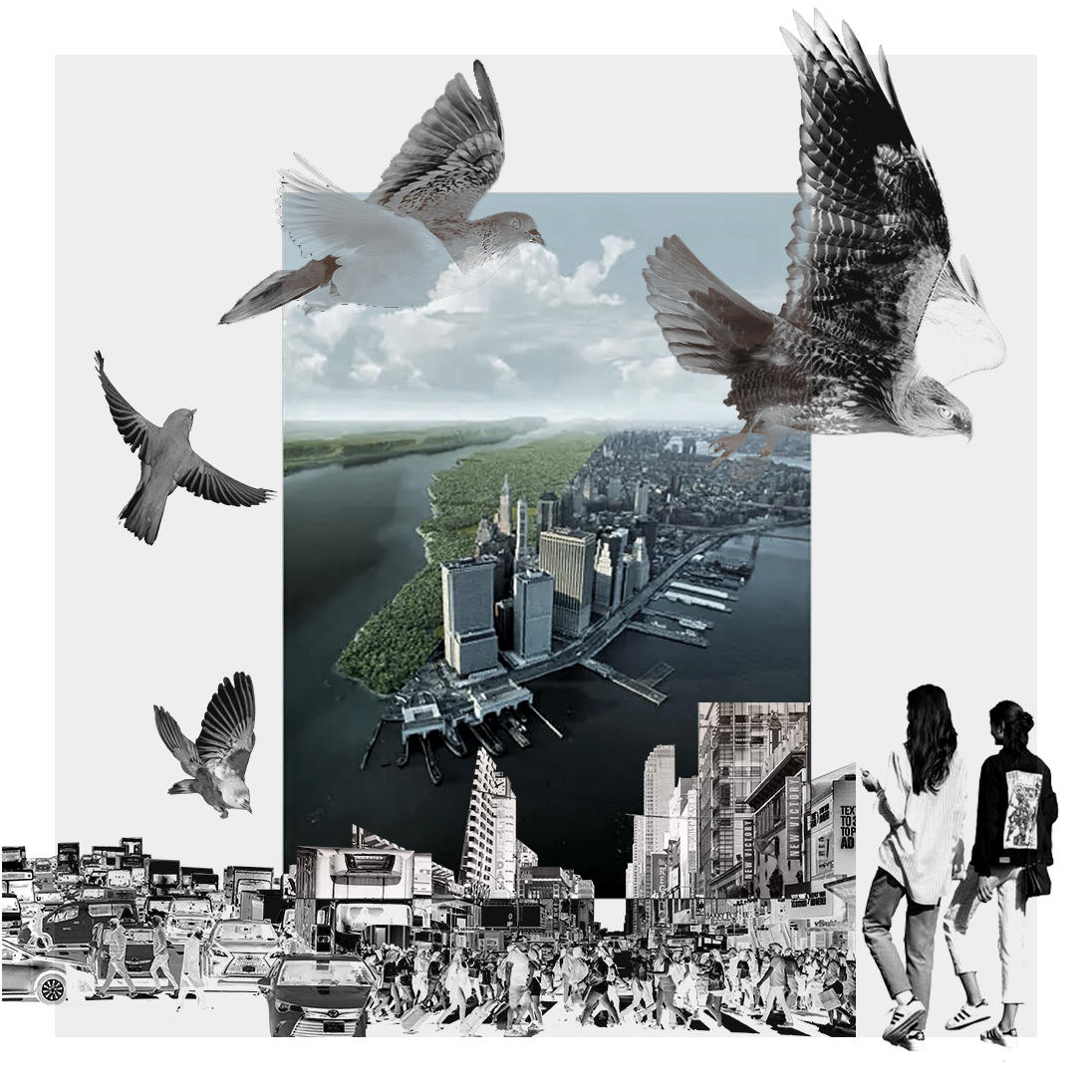
INTRODUCTION
Many metropolises were planned with street oriented grids. However, while making people’s lives easier and faster, it also isolates individuals from the environment forming a sense of loneliness and lack of self identity. These feelings come from the strangeness of the environment and the inhuman size of the surrounding features.
There are nearly 500 species of birds in New York city, of which more than 300 have appeared in Manhattan. This project aims to provide a resting place for people feeling overwhelmed in this dense city, and to provide a sanctuary for birds besides Central Park. By doing this, we can build up a harmonious relationship between humans and birds: we turn to nature for solace, and nature benefits from us facilitating natural circulations.
In this chapter, we will consider “what conditions should ideal cities have” as a prerequisite for thinking about specific sites, and use Manhattan as an example to look for potentials that can be used in other cities within modern conditions.
01 Cities Humans Birds
Image
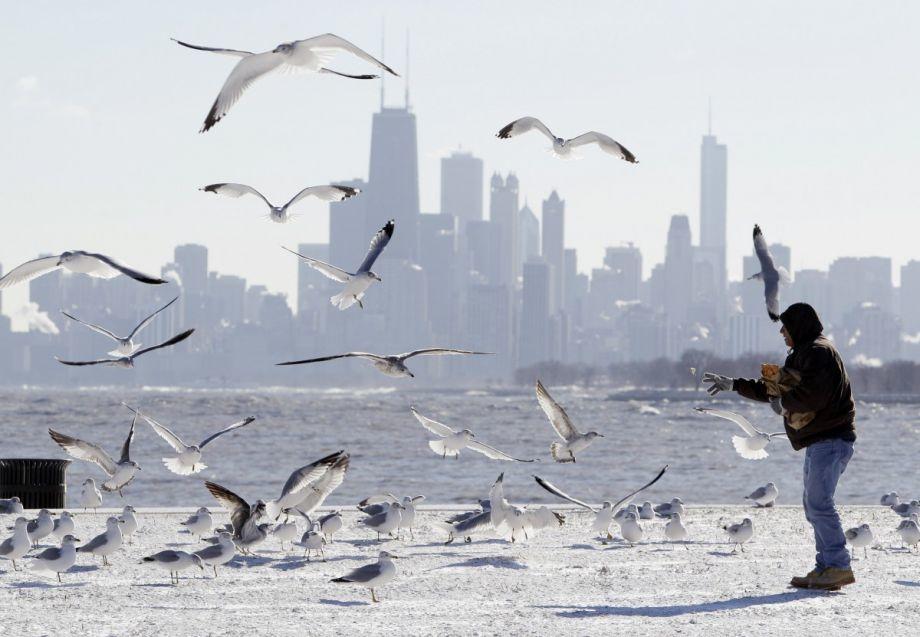
“The straight street promotes public order by doing away with the nooks and crannies of irregular neighborhoods, and thwarting the temptation to obstruct passage or to shield insurrection behind barricades..”
—Kostof (1991), 230
GRID CITIES
Why are we using grids?
Generally speaking, the reasons for the establishment of grids in various cities can be summarized into three points: military organization, colonial conquest, and political/economic domination. Although curved roads are more conducive to defense, wide streets seem to be preferred for the maintenance of civil rules. Grids were most often used when there was a large amount of territory to occupy in a short time. In addition, the grid is often used to establish a focal point in space and order, so that the entire city can be better controlled by the government or religion.
New York, especially Manhattan, is very representative for highly gridded areas. The Commissioners’ Plan of 1811 created this iconic feature for Manhattan. However, some factors
were temporarily ignored because the primary purpose at that time was to expand the city in a short period of time to meet the rapidly increasing population and development.
These grids are often formed according to some collective goals and objectives, and there is little participation and manifestation of individual will.
Timgad: An Ancient Roman City With a Very Modern Grid Design (Photo : George Steinmetz)
The Workers’ Town at the Giza Pyramid site The site is also known by its Arabic name, Heit el-Ghurab, and is sometimes called “the Lost City of the Pyramid Builders.”(Foley, 2001)
Manhattan Grid Map, 1814 The grid of New York was laid out between 1807 – 1811
HUMANS
Do people feel lonely in crowded cities?
The feeling of loneliness in the cities is a very subjective thing, but we may be able to use some numbers to show this situation on some levels. How many apartments in Manhattan would you have guessed have just one occupant? One of every eight? Every four? Every three? However, none of the above is the correct answer. It is one out of every two, making New York County the unrivaled leader in single-individual households, at 50.6 percent. In the entire New York City, one of every three houses contains a single dweller, enjoying coffee by herself or himself alone every morning, and then sleeping alone in the empty room every night.
And this sense of loneliness will not only arise between people and people, but also between people and their physical surrounding environment.
In today’s society, some of us lack a sense of belonging to the place where we live. Some people may say that is because we are not living in a place where we grew up. However, I think this is only a comparatively unnecessary part of the reason, for the fact is that we also can have immediate responses to the esthetic factors around us. The feelings that are brought by the forms, spaces and structures can also create a sense of belonging.
There is a lack of individual will in the planning of the grid, so the grid does weaken the connection between the human and the environment in which he or she lives. The grids make the boundaries clearer among communities. These kinds of boundaries are set for buildings, for structures and for management. These boundaries make it more convenient for us to navigate the city, however, the sense of belonging we can obtain from these boundaries is still very limited. In a context where anxiety and depression rates are higher in urban rather than rural settings, we really need to pay some attention to the loneliness feelings urban people have.
It is a condition of globalization, that a huge number of people have migrated to the places they are living. They are just dwelling there for work. Therefore, they lack the sense of belonging to the place from the very beginning once they step on the land of the cities. So here comes the questions: How do we obtain the sense of belonging in the street oriented grid city? How can migratory people have a sense of belonging?
Image: Solitude in the CityCaleb Schmitz by Caleb Schmitz
“To me, the idea of a bird is very easily taken as a metaphor for migration and breaking down borders.”
—Lunar New Year, New York Times
BIRDS
Are the birds in the city free?
In China, there is a saying that seeing a magpie means something good will happen today. I used to look for them deliberately on the way to school. It would make my day if I could successfully find them. However, as time passed, I heard less and less of such sayings. It even disappears in new generations. As myself, a person who once loved them, has gradually lost this enthusiasm.
If you ask me, what kind of bird have you seen in your city? I might say that there are sparrows, pigeons, seagulls, and some magpies. At the same time, I may also realize that I heard a lot of calls from birds that I do not know names. Rock Pigeons, House Sparrows, and European Starlings are widely known as “city birds”. While we ignore some of them, they are still living with us, trying to adapt to this city created by humans. In fact, at least 2,041 species—20 percent of all known bird species—live in the world’s cities, according to a research published in 2014 in Proceedings of the Royal Society B. It was the first-ever global study of biodiversity in urban areas. Unlike previous studies, which have focused on single cities or regions, this study spanned six continents, compiling data on birds from 54 cities and plants from 110 cities in North America, Europe, Australia, and South Africa. In New York City, there are nearly 500 species of birds, of which more than 300 have appeared in Manhattan.
However, a serious problem is still unavoidable: one of the big paradigms of urban ecology is that the biota of the world’s cities is homogenized. This means that although there are birds that can adapt well to today's urban condition, they are still a minority in the entire bird population. It is because the living environment of cities has also added a variety of new challenges and dangers to their survival. Such as high collision risks, accidental consumption of rat poison, and effect of evening lighting on bird migration. Besides this, pigeons in New York are always driven or even killed by New Yorkers because of their population number and living habits.
“One of the big paradigms of urban ecology is that the biota of the world’s cities is homogenized,” said lead author Myla Aronson, a researcher at Rutgers University and a Cornell University alum. “But we showed that at the global scale, cities are primarily retaining the unique composition of their geographic location.”
This means that although there are a few species that can truly be considered ubiquitous “city birds,” they are in the minority—a finding that wouldn’t have been possible without the global scope of this study. In fact, the list of species that you can find across 80 percent of the world’s cities amounts to just the four species mentioned above. The full list of birds found in cities includes nearly three-quarters of all bird families. Cities even provide habitat for rare species, including a total of 36 bird species identified by the IUCN Red List as threatened with extinction, the study said.
Although cities only take up three percent of the entire planet, more than half of the human population lives in cities. This makes the biodiversity problem in the city even more severe, because people often don't protect those things that they do not usually pay attention to.
Swallow-tailed Kite (and others) by Lunar New Year. Photo: Mike Fernandez/Audubon
Photo: James Maher
Photo: Bird In Paris by Leonardo Mazo
02 Conditions of Utopian City & Contemporary City
Image
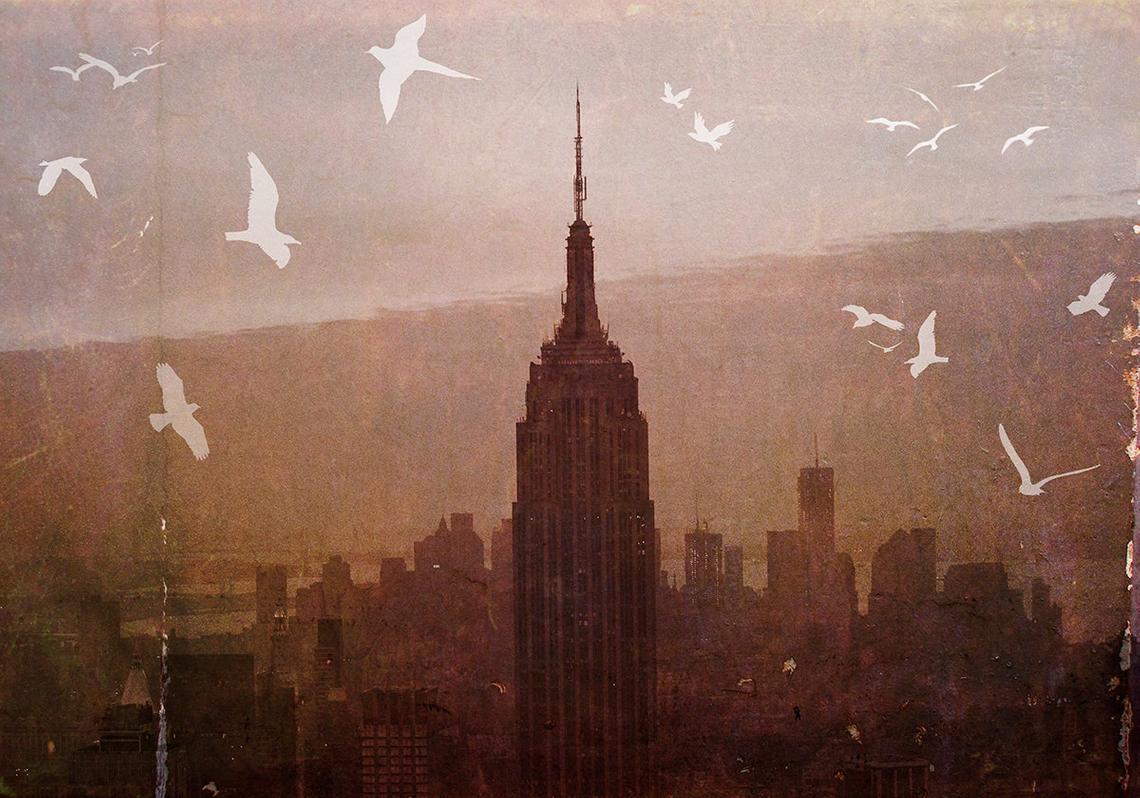
THINK BIG
After doing some case studies of utopian landscapes, I found that ideal cities often have a macro urban layout.
The urban grids are already a city scale strategy that can function as the base of the utopian city I imagined.
The skyscrapers were built because of the population and limitations of grids, forming a new layer of topography by its quantity and scale.
The Garden City Concept by en:Ebenezer Howard
Manhattan in 1931 Photo: r/newyorkcity
The skyscrapers were built because of the population and limitations of grids, forming a new layer of topography by its quantity and scale.
Photo : Unknown author
INSIDER
A sense of self-awareness and a sense of belonging to the environment are very important. This affects whether we feel comfortable in the environment, and it also affects our attention to the surrounding environment.
OUTLIER
In those Utopian landscape case studies, the successful utopia community is closely connected with the outside world. But at the same time, they also have their own systems, with free space left to their communities and even individuals.
I think that people living in modern cities also need some space or time for themselves. There should be opportunities to relax and adjust to stay out of things, while connecting with the busy life of the outside world.
Photo: Samuel Gottscho
Photo: Seona Kim
Opportunities of Being an Outlier
The towering buildings of Manhattan remind me of the Hanging Gardens of Babylon. This thought turns my attention to the rooftops of the buildings. The rooftop is actually a type of space in the city that is still underutilized.
NATURE
In the utopian landscape cases I studied, those cities or communities emphasized the connection between human and nature, especially the connection between human and land.
Why Do Birds Migrate?
The main purpose of bird migration is to find sufficient food and nesting sites. Birds that build nests in the northern hemisphere tend to migrate north in the spring, looking for increased numbers of insects and sprouting plants for food. When winter comes, the amount of food provided by insects and plants declines, and these birds will migrate south again.
Left: Bird Migration in the Americas, supplement to the August 1979 National Geographic Magazine
Right: How Birds Migrate, supplement to the March 2018 National Geographic Magazine
Manhattan - Atlantic Flyway
New York is located along the Atlantic route of bird migration. Many eastern birds pass by during their migrations in spring and autumn. This is an epic journey, and many birds use it as a migration path for their race to survive.
When birds fly along migratory routes, many birds will look for some iconic structures to confirm their direction. Imagine if you were a bird flying over Manhattan, with three ideas in mind: food, water, and shelter. When you fly over these high concrete buildings, you will find some green islands. Those are the parks in our city: these parks are not just places for humans to relax, but also places for birds to rest.
*MORE MANHATTAN HOTSPOTS:
Spring Migration: American Woodcock; woodpeckers; warblers, vireos, tanagers, orioles, and other songbirds; occasional oddities such as nightjars or rails
Fall Migration: American Woodcock; woodpeckers; warblers, tanagers, orioles, sparrows, and other songbirds; occasional oddities such as nightjars or rails
+HUDSON RIVER PARKS:
Spring Migration: Flycatchers, thrushes, kinglets, warblers, tanagers, and other land birds; waterbirds and raptors over the Hudson
Fall Migration: Raptors; warblers, thrushes, sparrows, and other songbirds
-HARLEM & EAST RIVER PARKS:
Spring Migration: Shorebirds; warblers and other songbirds
Fall Migration: Shorebirds; warblers and other songbirds
GOVERNORS ISLAND
Spring Migration: Woodpeckers; flycatchers; warblers, tanagers, orioles, and grassland birds
Fall Migration: Raptors; freshwater sandpipers; woodpeckers; flycatchers; grassland birds, warblers, and other songbirds
CENTRAL PARK:
Spring Migration: Flycatchers, cuckoos, warblers, vireos, kinglets, tanagers, grosbeaks, and other songbirds; wading birds and waterfowl; freshwater sandpipers
Fall Migration: Warblers, thrushes, sparrows, and other songbirds; raptors
Image
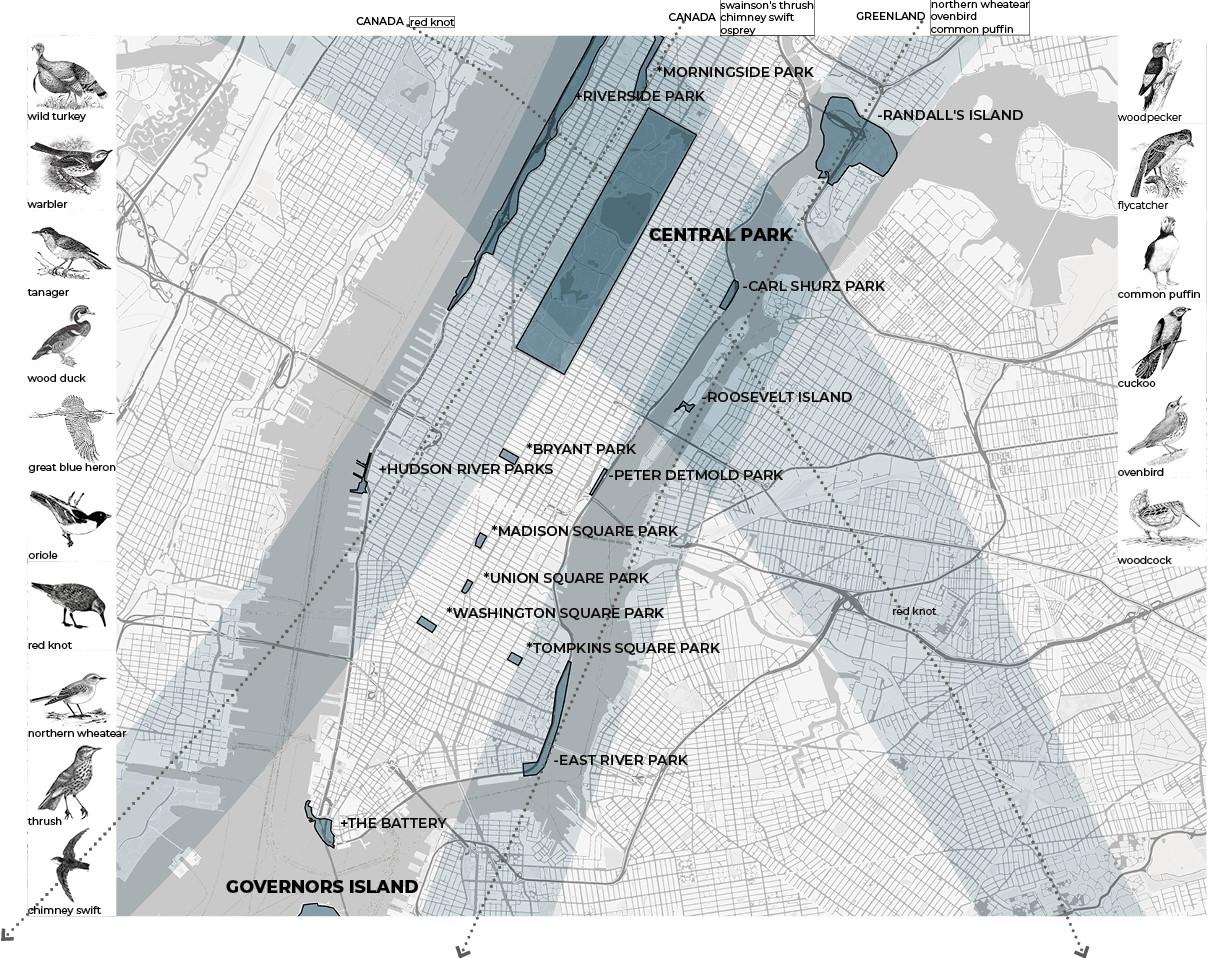
Image
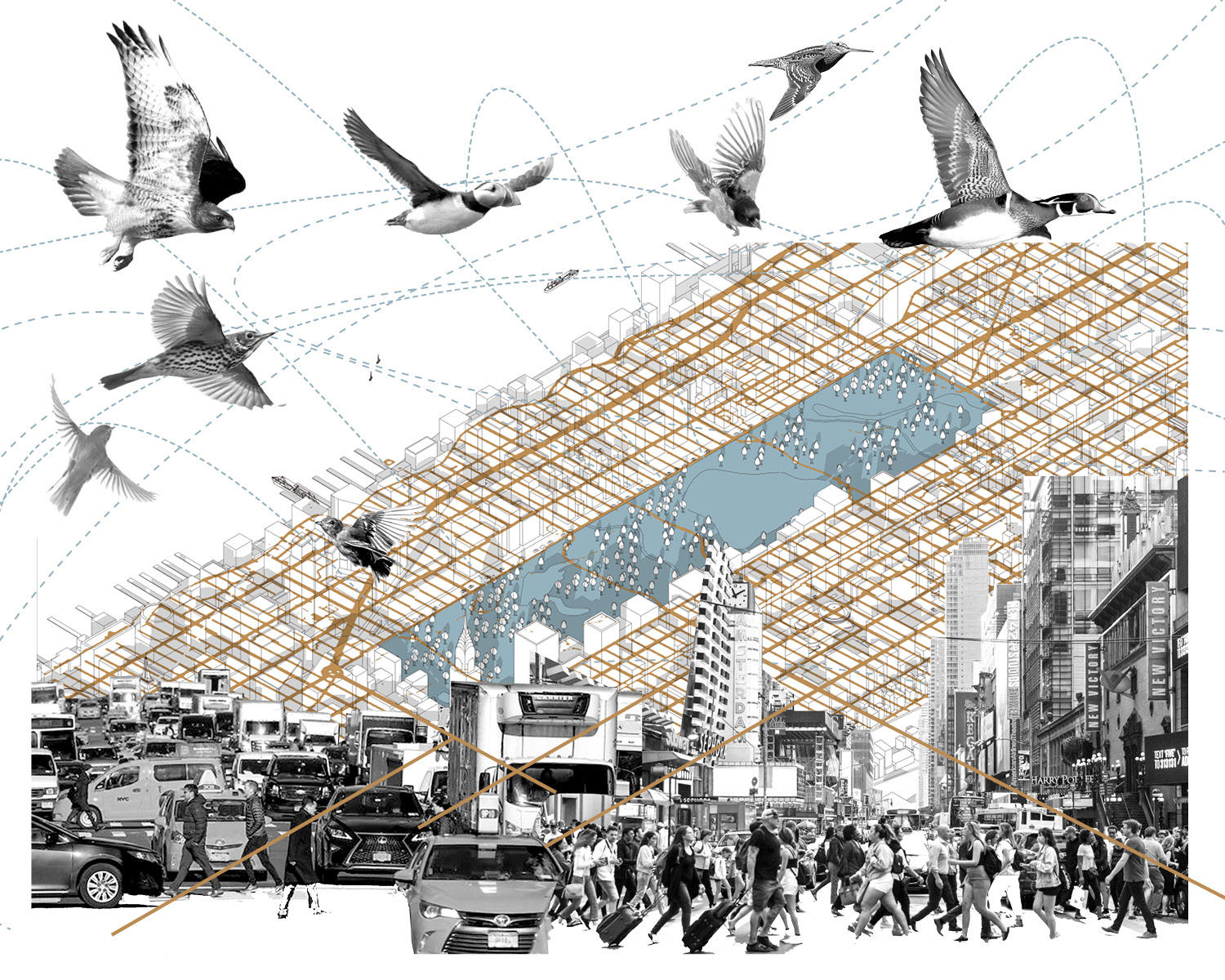
Image
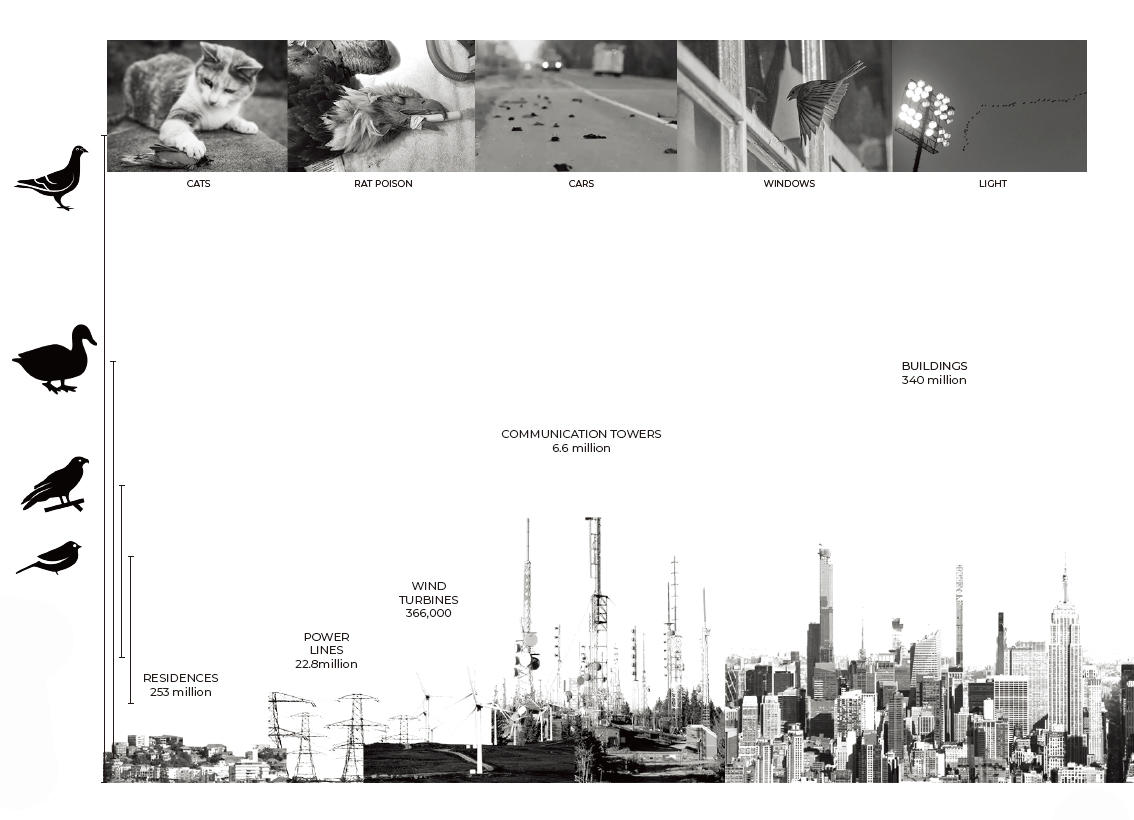
Bird - Different from Human
Although we always regard birds as symbols of freedom by their wings and ability to fly, they also have limitations while living with us in the grids and tall buildings.
Unlike the way humans move, birds can use their wings to fly. Therefore, humans and birds actually occupy different activity spaces in cities, but they have to overlap in certain areas, leading to some encroachment on each other.
Encroachment from Birds
While we are affecting the lives of birds, birds are also encroaching our lives.
Sometimes when people step into the territories of birds, the birds will be aggressive. People are also troubled by bird droppings, because the stains are very difficult to remove. In addition, some birds with bad living habits can also bring diseases to humans.
Pigeons, birds that are hated by humans
As a representative member of the hated birds, pigeons living in modern lives are the same as the hero pigeons in the two world wars (More details in Appendix- History of Pigeons). So I use pigeons as an example to find the contradiction between humans and birds, and use this as a starting point to find the possibility to solve these problems.
Up on the Roof: The Revered, Reviled City Pigeon in the past
Though pigeon fanciers are a rare breed in the city today, the pigeon lofts were anywhere in New York City. Pigeons have been domesticated for thousands of years and kept by people around the world for their companionship, sport, and service. Locally, each neighborhood in New York once had a community of pigeon keepers (or fanciers, as they are commonly known); a dense network of rooftop pigeon lofts stretched across the five boroughs.
Pigeons in New York in today’s condition
Pigeons! They eat our leftover bagels, fly past our heads with no regard for personal space, and embody New York City’s tough, loud, and enduring character.
“Pigeons are pretty courageous. They are very friendly winged New Yorkers that carry a lot of aggression with them. They are family oriented and perpetually hangry.”
-Alexander Scelso, lifelong Brooklynite
“If you like white doves but you don’t like pigeons, that’s kind of racist.”
-Abbey Watt, current Queens resident
“Pigeons are rats with wings.”
-Cassie Sykora, lifelong Staten Island resident
Efforts we made for pigeons
Fly By Night paid homage to pigeon keeping, both in New York and farther afield. While property development and population shifts have caused the practice to wane, Fly By Night reflected back on and made visible this largely forgotten culture. The iconic Brooklyn Navy Yard, once home to the country’s largest naval fleet of pigeon carriers, was the ideal setting for Riley’s Fly By Night–a tribute to the beautiful, diverse and fascinating histories of pigeon flying and New York City.
But this kind of occasional activity cannot change the reality that pigeons are still hated by most people.
Encroachment to Birds
Urban conditions with tall buildings have the highest collision threats and number of annual mortality. Besides this, cats, rat poison, cars and light also have effects on birds. Light can even influence the migration routine during nights.
An Aerial System
In this project, my goal is to use the rooftops of the buildings, taking advantage of the new topography the roofs formed to build up an aerial system for birds and humans.
A System Based on Height
The different functions of the roofs will depend on the height and the functions of the buildings. For lower roofs, they are mainly used for both humans and birds. For the highest ones, they are mainly used for raptors.
CONCLUSION
Image
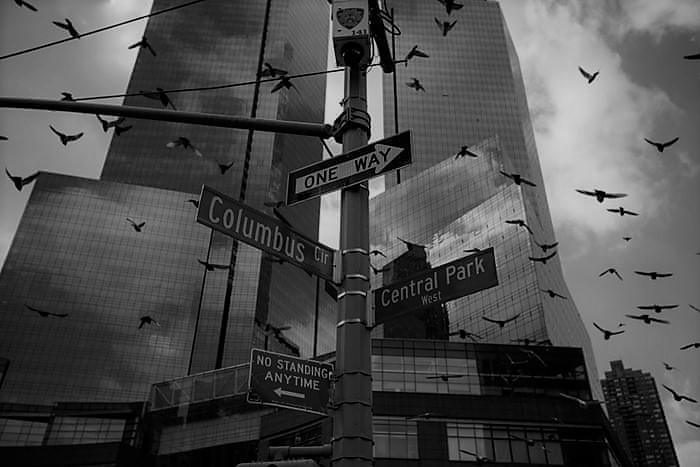
CONCLUSION
While there are some negative thoughts about cities in the earliest phase of this project, I found that the grid system actually meets some conditions of an ideal city.
Although the relationship between humans, birds and cities is not in an ideal situation, in fact, the existing conditions of cities have provided us with a lot of potential. With this potential, we need to strengthen people’s sense of self-awareness and connection with the surrounding environment.
Photo: Michael Nagle/Bloomberg
CHAPTER TWO - TYPES OF BUILDING GROUPS
Image
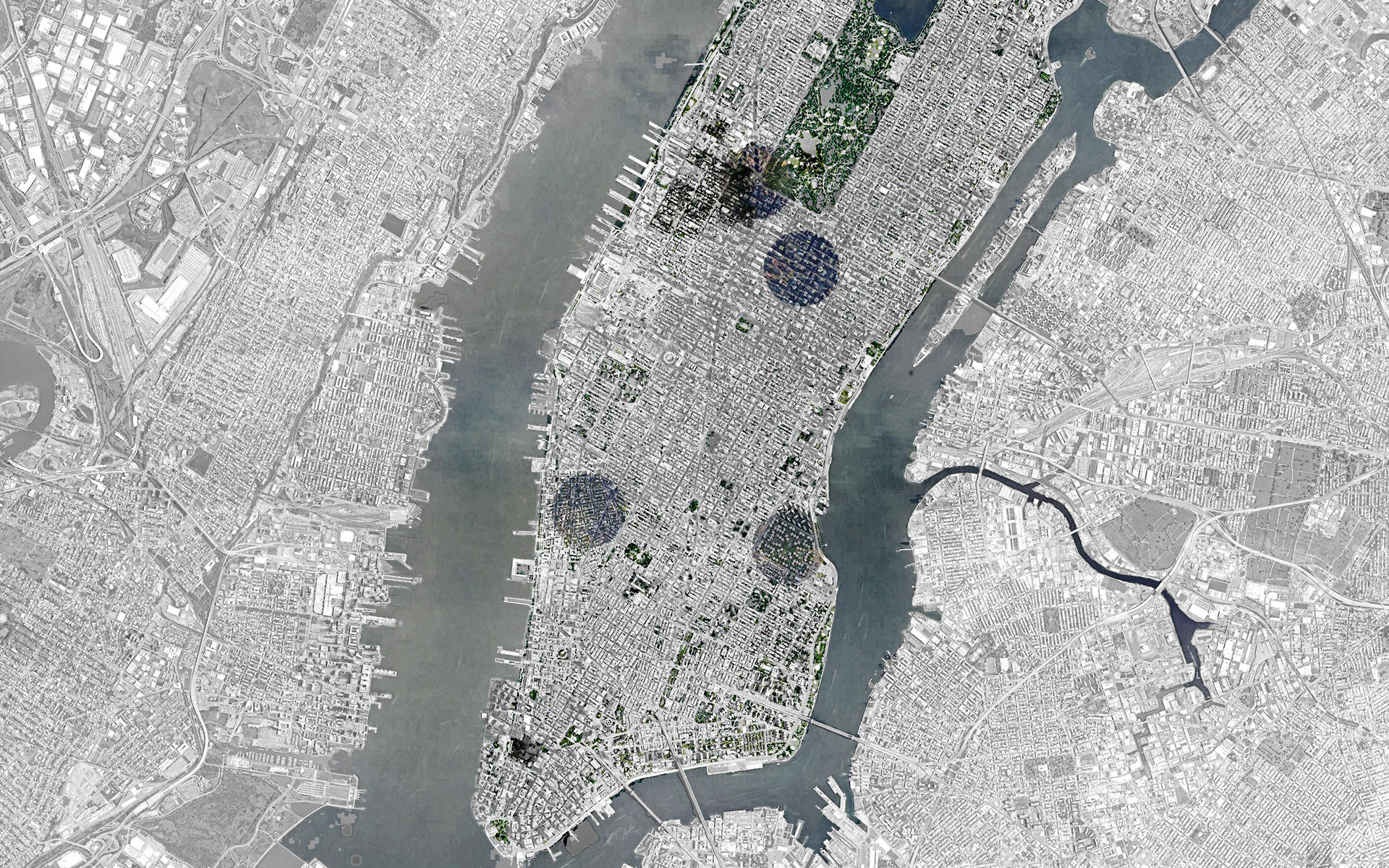
INTRODUCTION
In this phase of the design process, as a toolkit-like project, I chose some typical building groups in Manhattan as my sites, so that the strategies can also be applied to other locations if they have similar problems or characteristics.
In terms of site selection, I chose areas with higher risks to birds and areas with more potential as my project base. Then, I came up with proposed corresponding specific solutions and development strategies for the risks and potentials of each type of area.
Some specific bird species will be mentioned and considered in the later part of this chapter as some of the main stakeholders of the project. At the same time, people as a member of the stakeholders have always been considered. Promoting human-bird interaction and a sense of engagement is also one of the goals of this project. These strategies not only met some of the needs of birds, but also fulfilled the purpose of promoting interaction to a certain extent.
Classification Analysis
Image
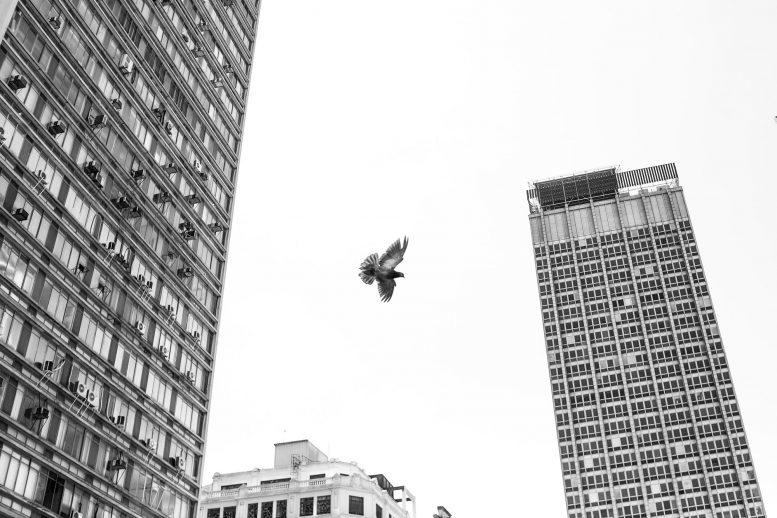
TYPE A
Buildings Close to Large Parks
In the choice of the first type of building group, the reason is mainly because of the geographical location and architectural characteristics of the building group. In the Newsweek, there was a report written by M.L. Nestel pointed out the high collision number of birds crashing onto reflective glass.
“They’re little birds and there are a bunch of them that end up there during the summer,” the uniformed worker said, peering upward. “Luckily, I’m not the one that has to clean them up.”
Image
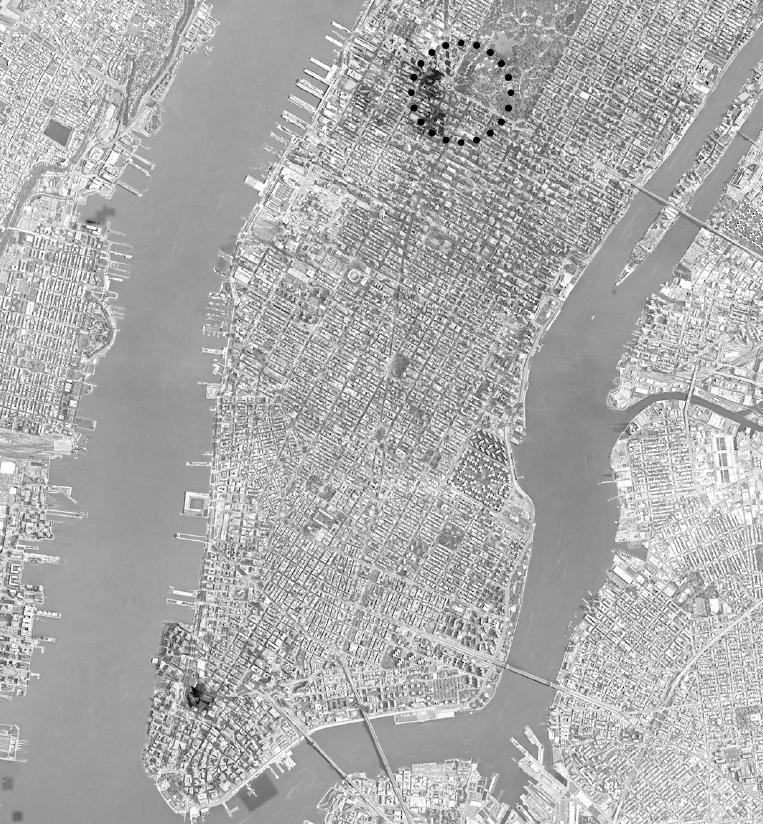
Analysis
According to analysis, the main reason for the frequent collision of Times Warner Center building is because it is facing Central Park. The high coverage of its glass makes it highly reflective of the green space in Central Park. For some birds that do not adapt so well to the city like sparrows and pigeons, this is not a good thing. The reflection in the glass will make it difficult for them to distinguish between the real and the unreal.
Image
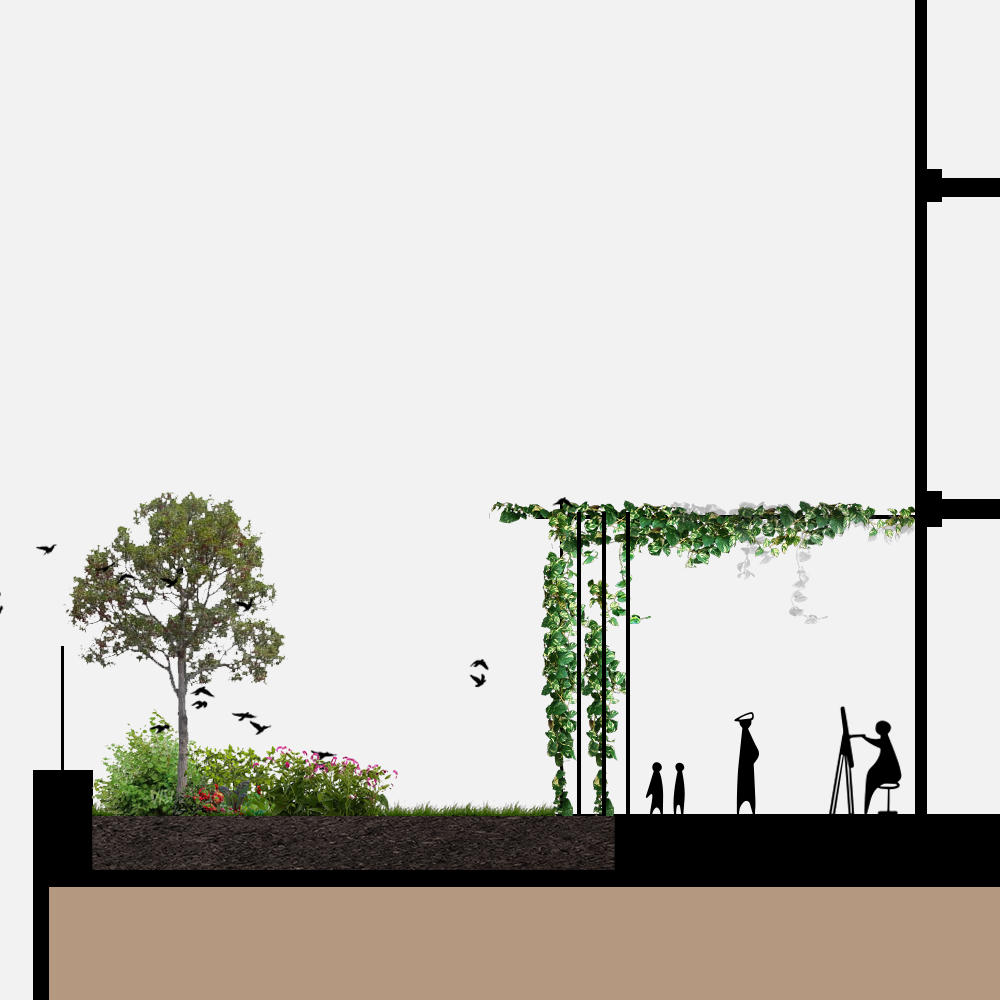
Strategy 1
The lower roofs will be open to people as a public space. Because this type of buildings are close to large parks, there is no need to worry too much about providing nesting sites and food sources. This type of place has a good opportunity to attract birds in the park to the roofs. While using the trellis to increase the green volume to attract birds, planting the appropriate plant species can better attract certain birds.
Image
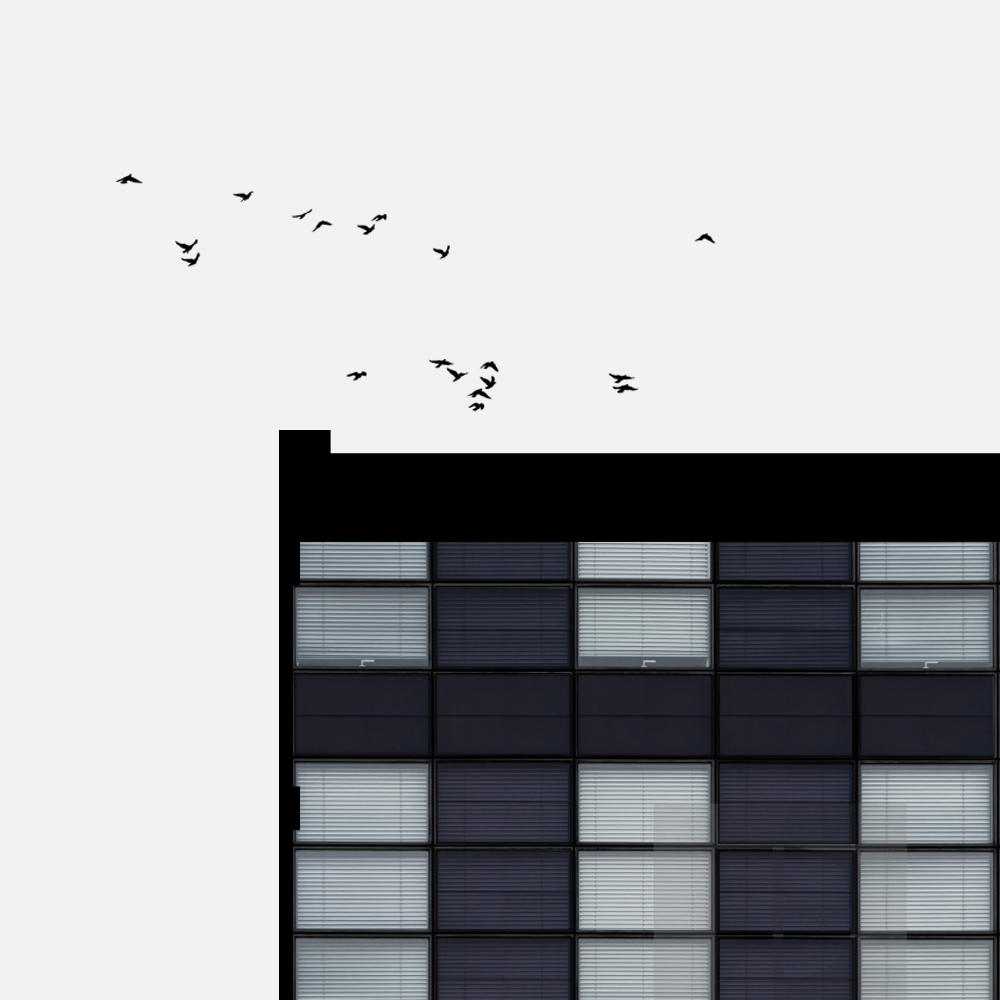
Strategy 2
Replace highly reflective glass windows with one-way colored solar panels. While avoiding bird strikes, solar energy can be collected for other needs.
Image
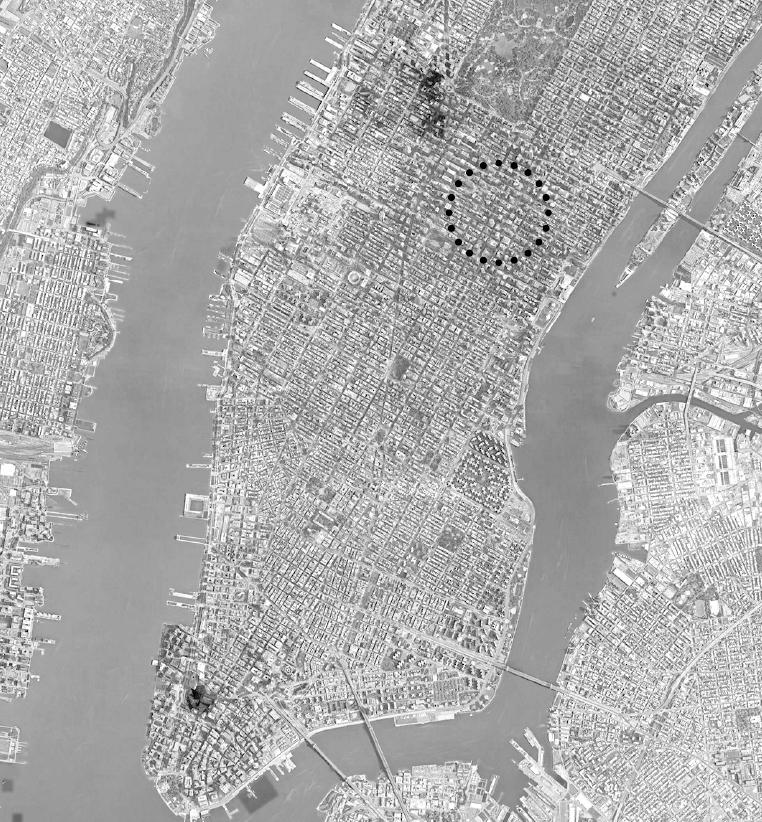
TYPE B
Dense Skyscrapers
The choice of the second building type for the is still based on a high-risk collision perspective. On the surface of skyscrapers, reflective glass is one of the main manufacturing materials. This fact will cause many buildings to be invisible in the sky for birds because they reflect too much sky color.
Image
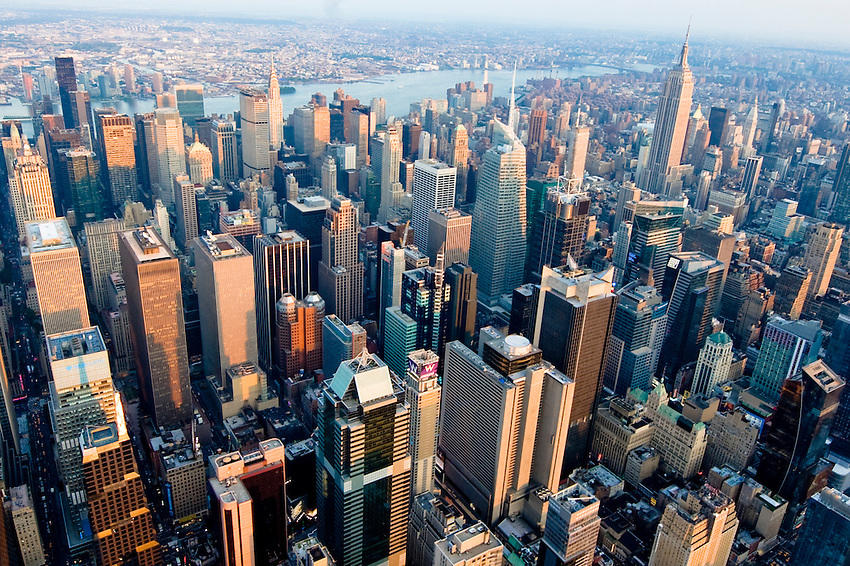
Analysis
According to analysis, the height of these buildings exposes them to the vast sky. And the clean glass surface makes it very easy to reflect the light of the sky.
One of the biggest problems is if my goal is to attract birds to come to this place, there has a high possibility that this place would become a snack area for hawks for the fact that there are not many shelters and the buildings are comparatively low and quite open.
Strategy
Because this type of building group has a relatively high altitude, the use of roofs is restricted due to the extremely strong wind and excessive height. Therefore, for this type of building group, the focus is on the lower
stepbacks and corners. Build a suitable nest
base for the hawks to build their nests here.
Red Tailed Hawk
Red-tailed Hawks occupy just about every type of open habitat on the continent. This includes desert, scrublands, grasslands, roadsides, fields and pastures, parks, broken woodland, and (in Mexico) tropical rainforest.
Mammals make up the bulk of most Red-tailed Hawk meals. Frequent victims include voles, mice, wood rats, rabbits, snowshoe hares, jackrabbits, and ground squirrels. The hawks
also eat birds, including pheasants, bobwhite,
starlings, and blackbirds; as well as snakes and carrion. Individual prey items can weigh anywhere from less than an ounce to more than 5 pounds.
Red-tailed Hawks typically put their nests in the crowns of tall trees where they have a commanding view of the landscape. They may also nest on a cliff ledge or on artificial structures such as window ledges and billboard platforms.
Image
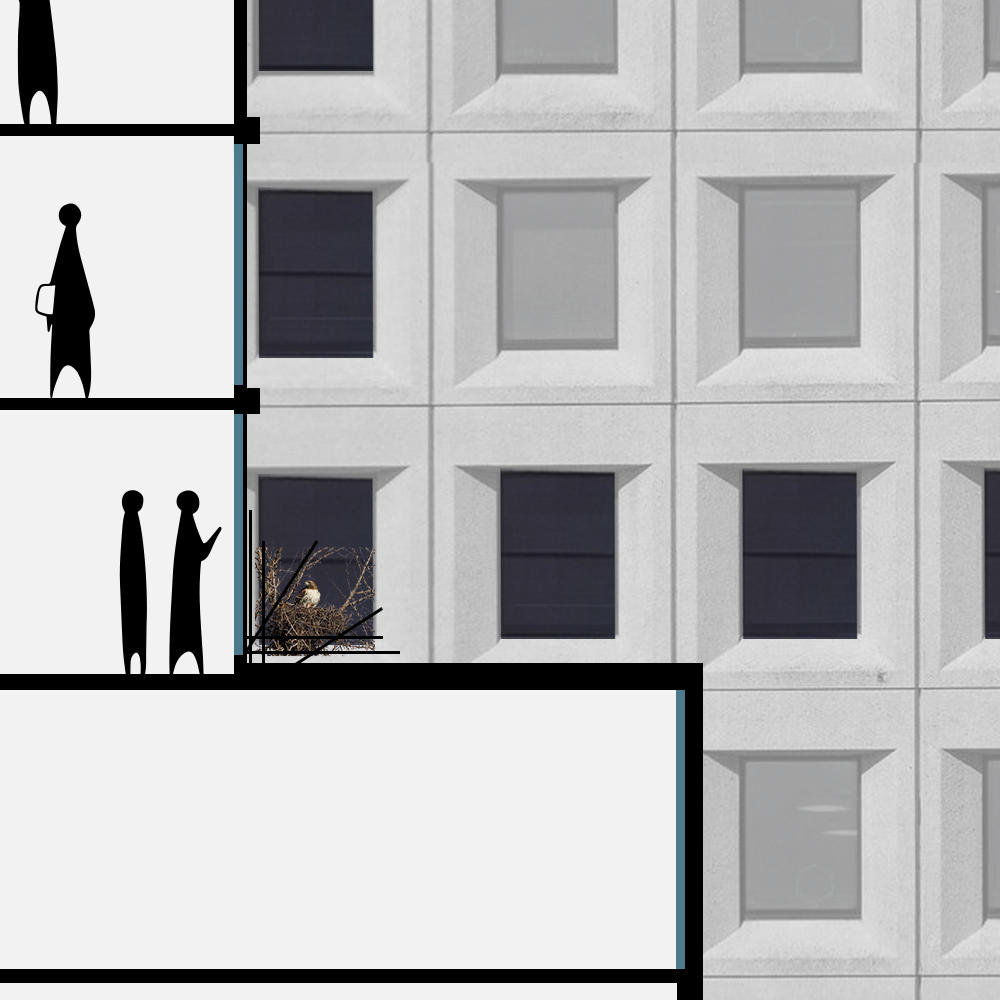
Image
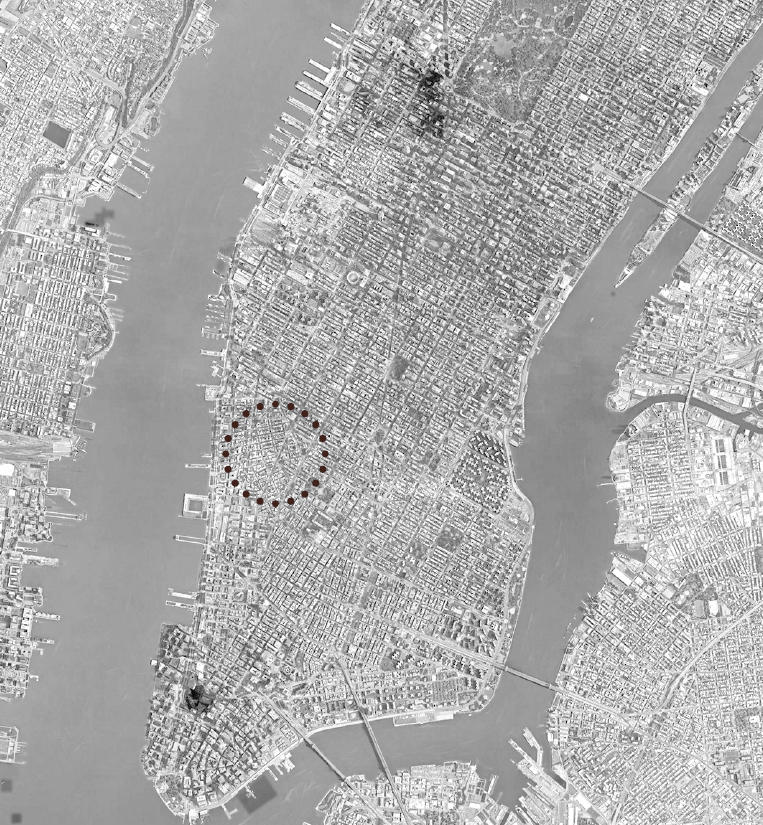
Analysis
According to analysis, the third type of building group has very good geographical conditions. Appropriate building heights make the roofs here have more possibilities and chances of use.
But at the same time, the situation here is very complicated. Because it is also very close to Washington Square Park, a large number of pigeons will come to this place. As a bird, pigeons are rarely welcomed by residential areas.
TYPE C
Dense Residential Buildings
The third type of building group is located in the Greenwich Village area. The main reason for choosing the building group here is because it has a lot of possibilities. This is mainly a residential area, with relatively low buildings and the advantage of being close to the Hudson River. Therefore, it is a tangible area for both humans and birds, providing countless possibilities for reaching the main goal of the whole project.
Image

Image
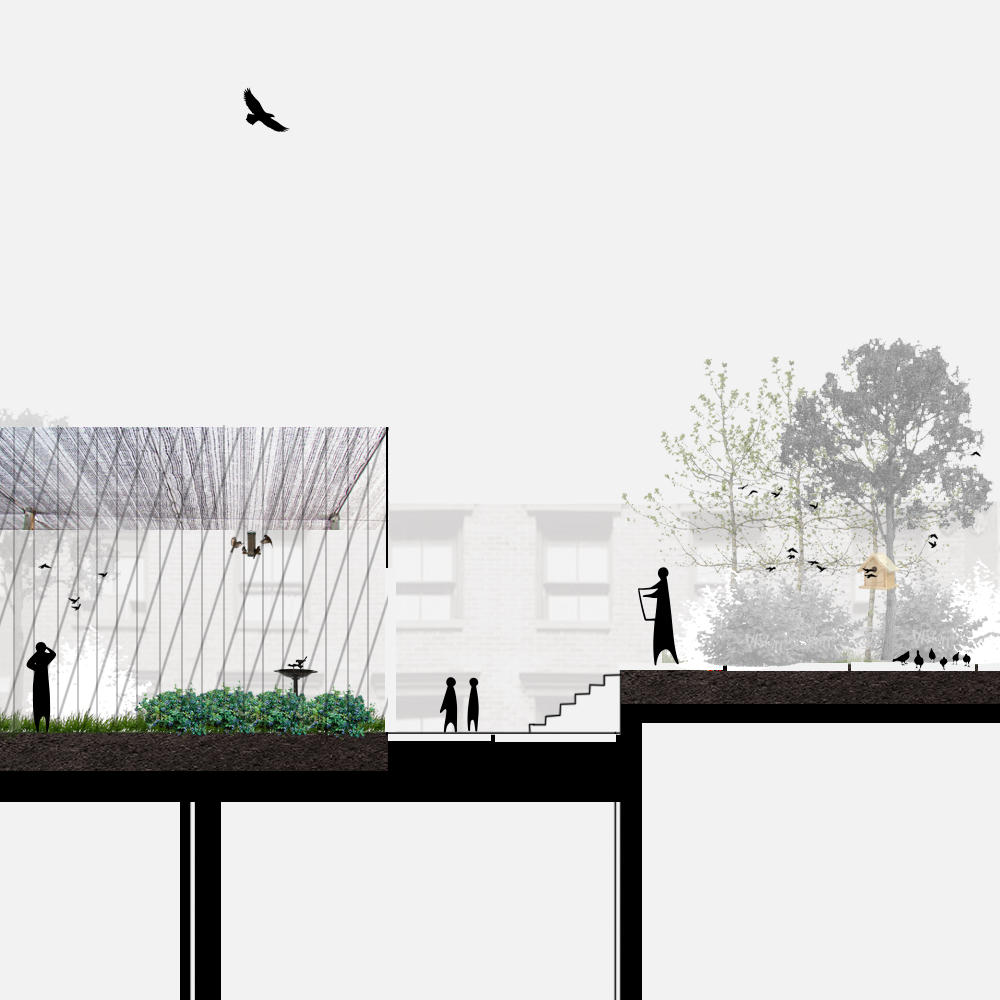
Strategy 1
The goal here is to build up an urban agriculture area that allows people to participate and create a place welcoming the songbirds by meeting their needs of living.
In this area, fruit plants will be planted and bird
baths and bird feeders will be set to attract songbirds. To prevent the songbirds from robbers, the pigeons, and their predators, nets and fences are needed, which will only allow some small songbirds to get into this feast.
Image
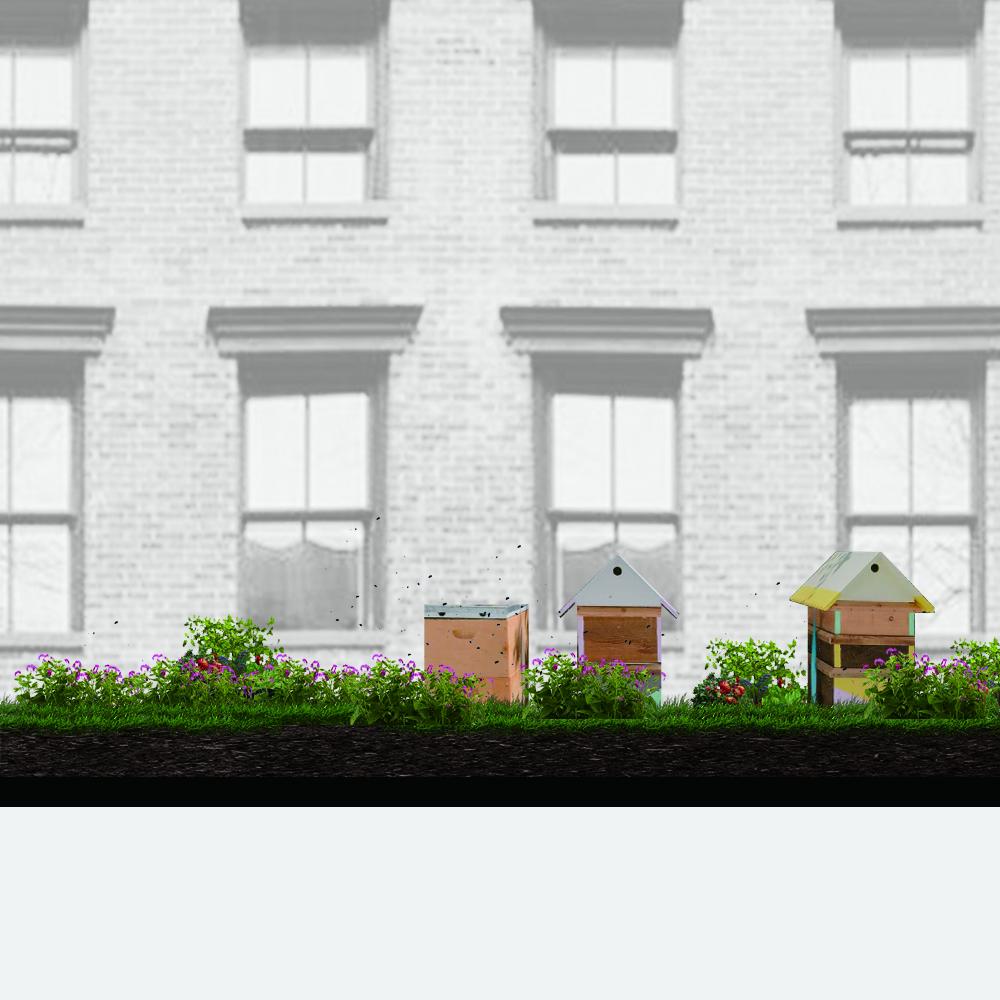
Strategy 2 (Part 1)
As a source of food, Insects are not ignorable in this system. In this place, I also include some of the rooftops that are somehow separated from others to become outdoor bee farms or habitats mainly for insects covered with dead wood and stones, which will make this system more cohesive.
Image
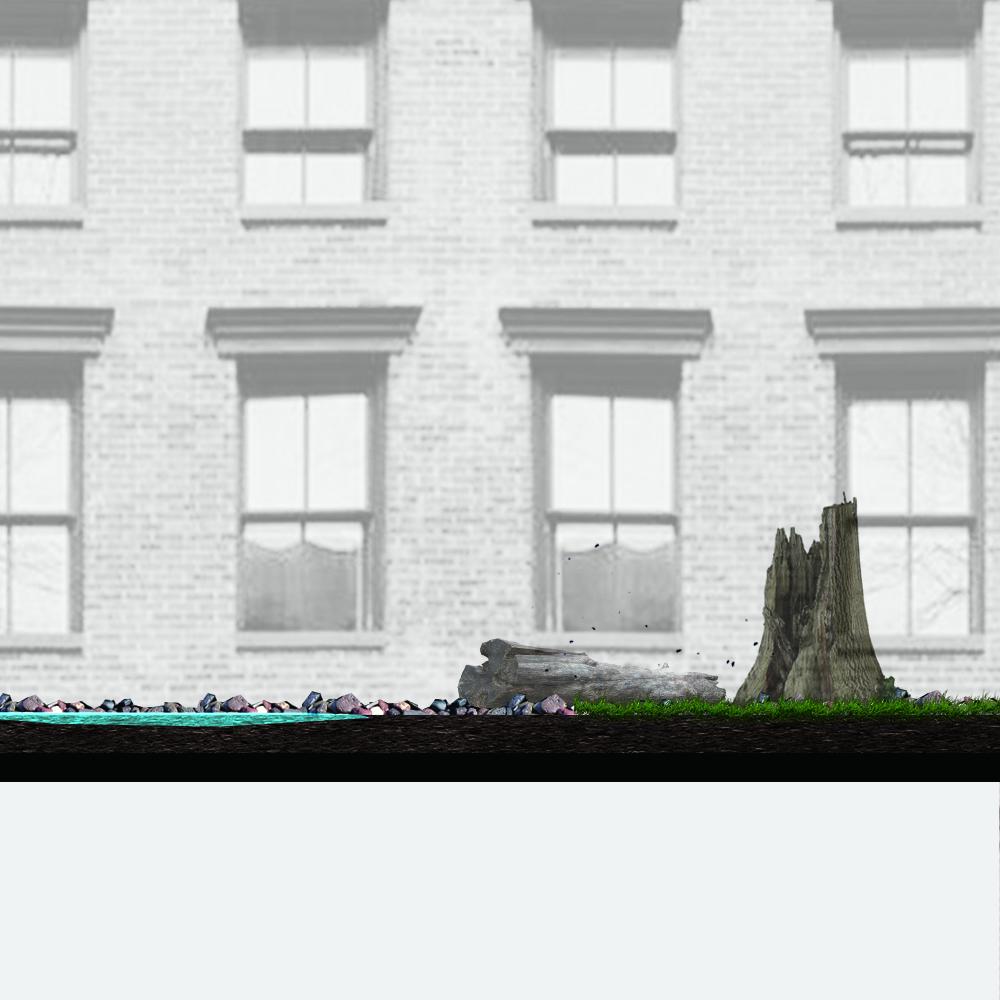
Strategy 2 (Part 2)
American Robin
Mainly fruits
Nests are typically in the lower half of a tree
Blue Jay
Insects and nuts
Nest 10-25ft above ground
Black Capped Chickadee
Fruits
Seeds
Birdhouse
Northern Cardinal
Mainly fruits
Insects
1-15 feet high and hidden in dense foliage
TYPE D
Buildings Close to Waterfront
The fourth type of building group, Stuyvesant Town is also an area dominated by residential areas. Unlike the Greenwich Village area, the buildings here are taller. At the same time, it is also close to a park where waterfowl often appear, which increases the potential it has for the future.
Image
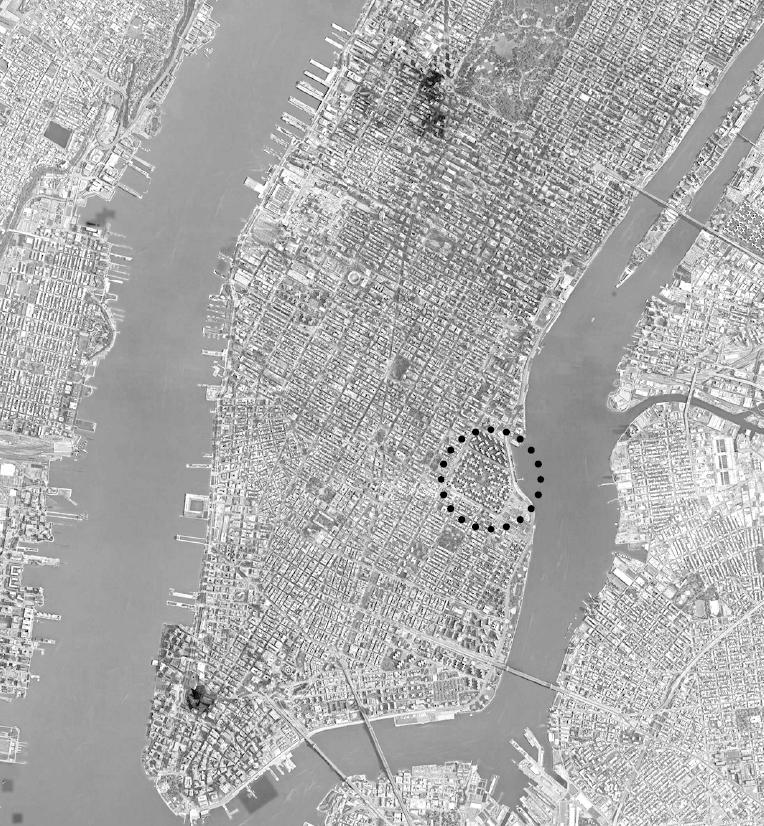
Analysis
According to analysis, although there are good geographical conditions here, which makes it easier to attract some waterfowls to visit. But in fact, there is still a lack of some more specific conditions to make waterfowl use this as a habitat.
Image
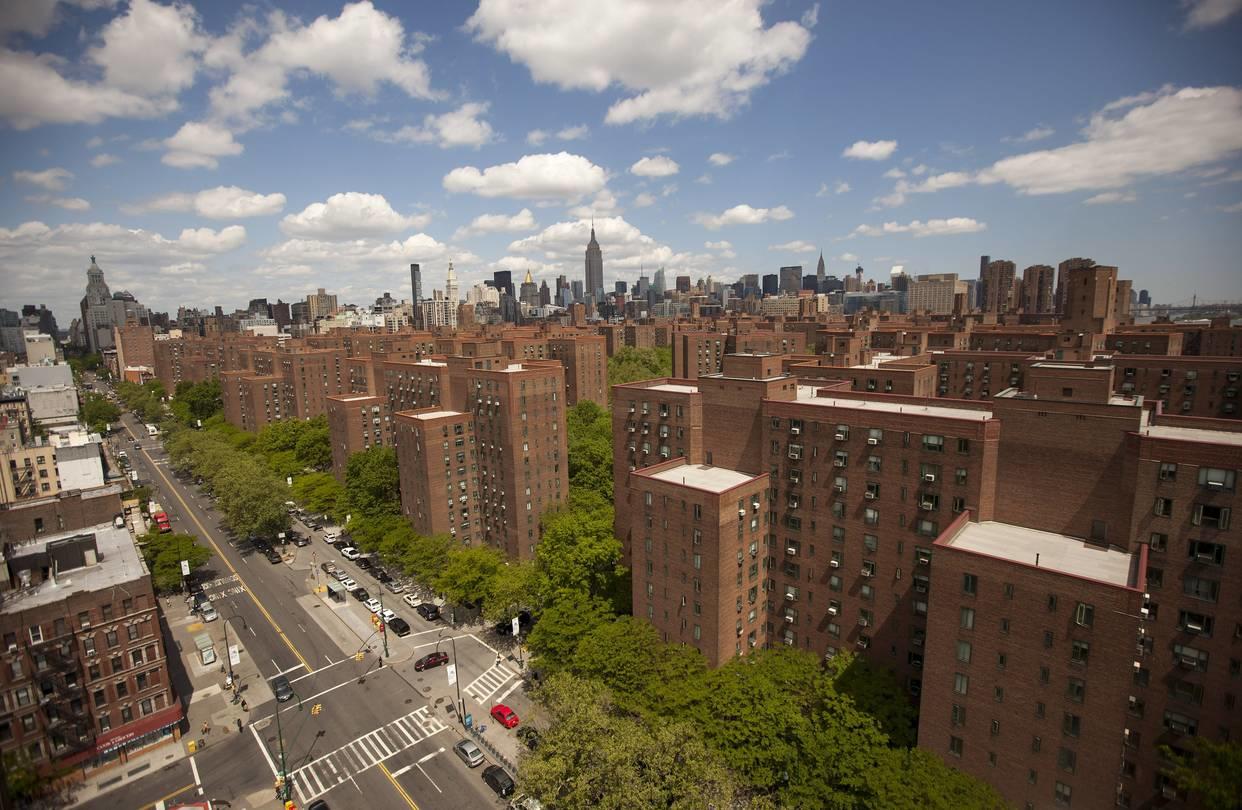
Image
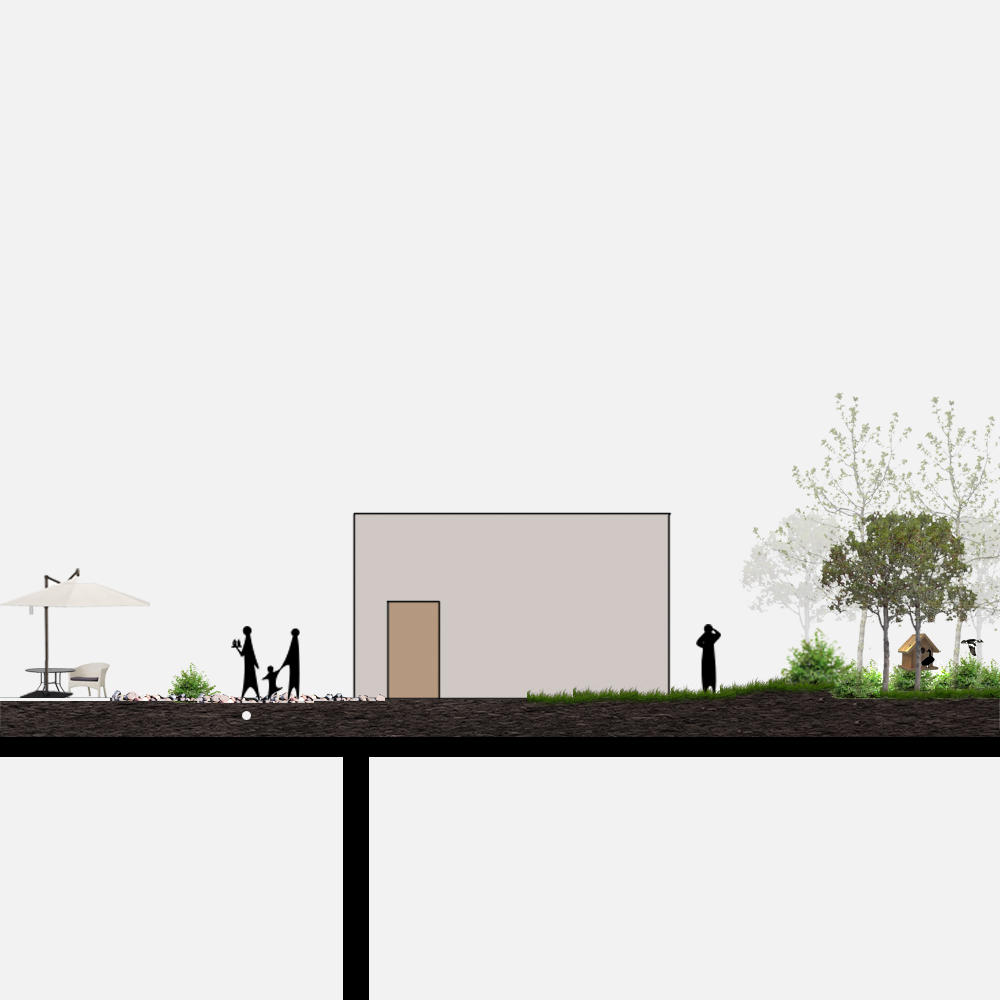
Strategy 1
In these buildings, the strategy is to separate the space into two parts.
The side facing the waterfront will be designed mainly for birds, which will be covered by low bushes and equipped with bird houses for typical species. On the other side, it will be designed mainly for human uses and stormwater management on roofs.
Bufflehead
Bufflehead breed near ponds and lakes in boreal forest and aspen parkland of Canada and Alaska, with isolated populations in the western United States. They use shallow, sheltered coves, harbors, estuaries, or beaches, avoiding open coastlines. Inland, they use ponds, lakes, impoundments, or bays along slow-moving rivers. During spring migration they spend time on major rivers or valley lakes, often in the first spots to become free of ice.
Bufflehead dive for aquatic invertebrates, crustaceans, and mollusks. They typically swallow their food while still underwater.
Bufflehead nest only in cavities, using holes dug by Northern Flickers and sometimes Pileated Woodpeckers (as well as artificial nest boxes).
Image
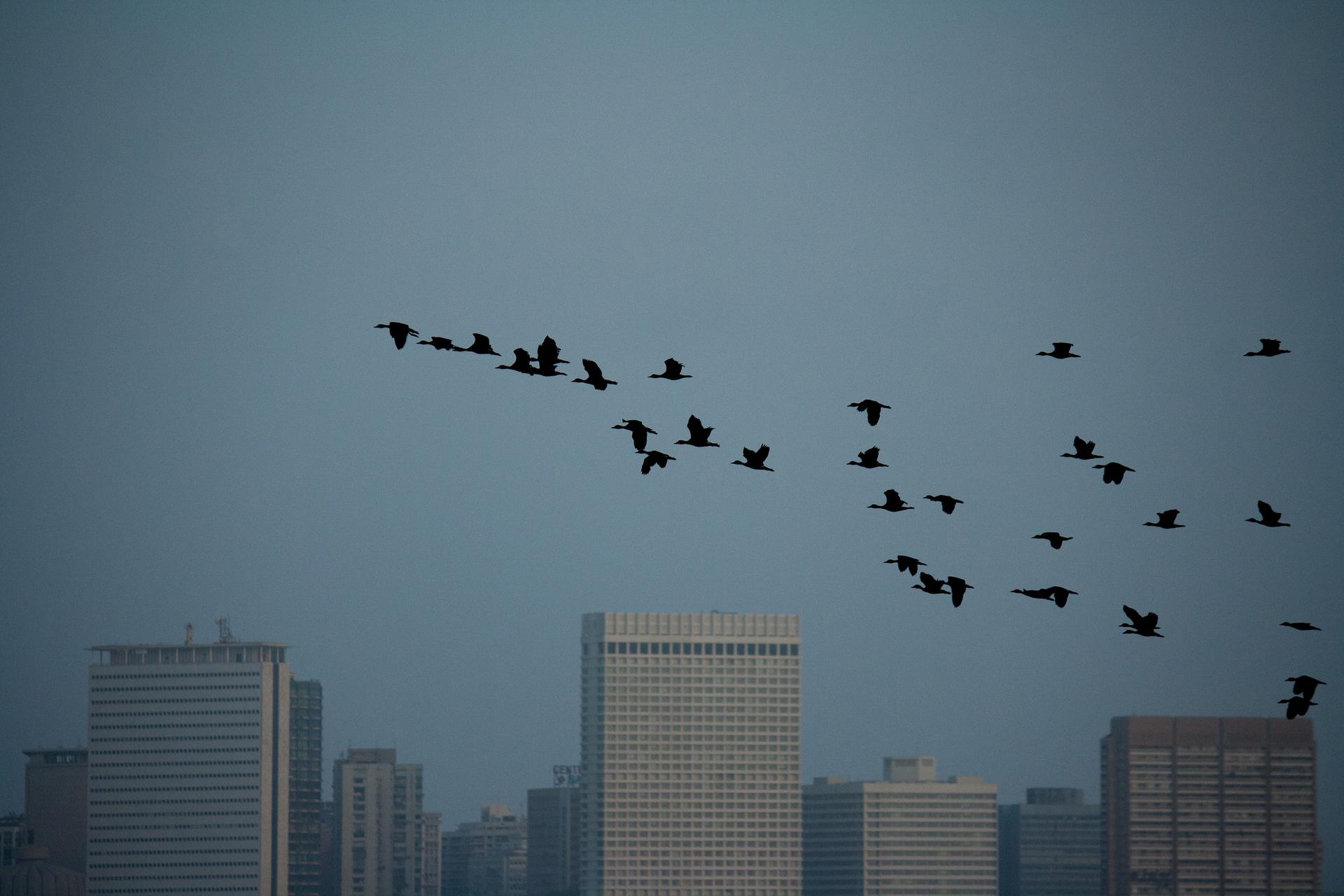
CONCLUSION
As a strategic design project facing many cities, this project analyzes Manhattan, as one of the typical cities, to classify the building groups. Based on the research towards each type of building groups, I propose a relatively cohesive atrial ecosystem that can be implemented in multiple cities. This system started from how to meet the needs of humans and birds. Then, it gradually improved, forming a field that can promote human-human and human-inhuman interaction and engagement on the basis of satisfying both parties.
CHAPTER THREE - SONGBIRDS AND PIGEONS IN GREENWICH VILLAGE
Image
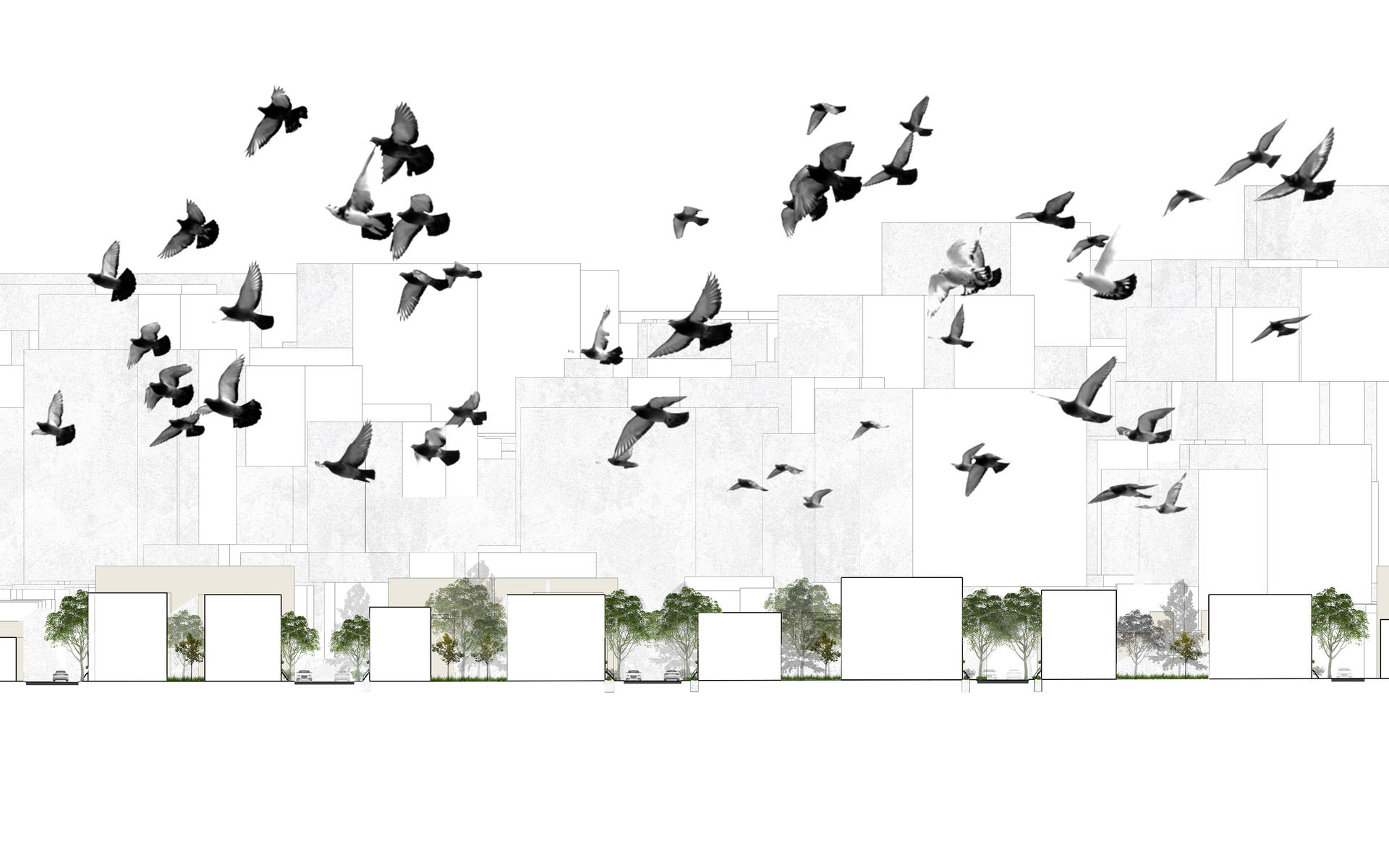
INTRODUCTION
What about the pigeons?
In the previous chapter, I focused more on how to attract birds and how to protect them from other species. In this chapter, I will speak for the pigeons and defend for them.
As a once beloved bird, the living conditions of pigeons in today’s situation are really bad compared to other songbirds.
I choose Greenwich Village as the example site for this phase of design. Take advantage of its high potential community engagement to build an aerial ecosystem on the roofs. This ecosystem will include not only birds and humans, but also other related elements such as bees, edible crops, and so on. There is not only interaction between birds and humans, but also human communication and interaction between humans and other nonhumans.
New Strategy - Pigeon Loft
Image
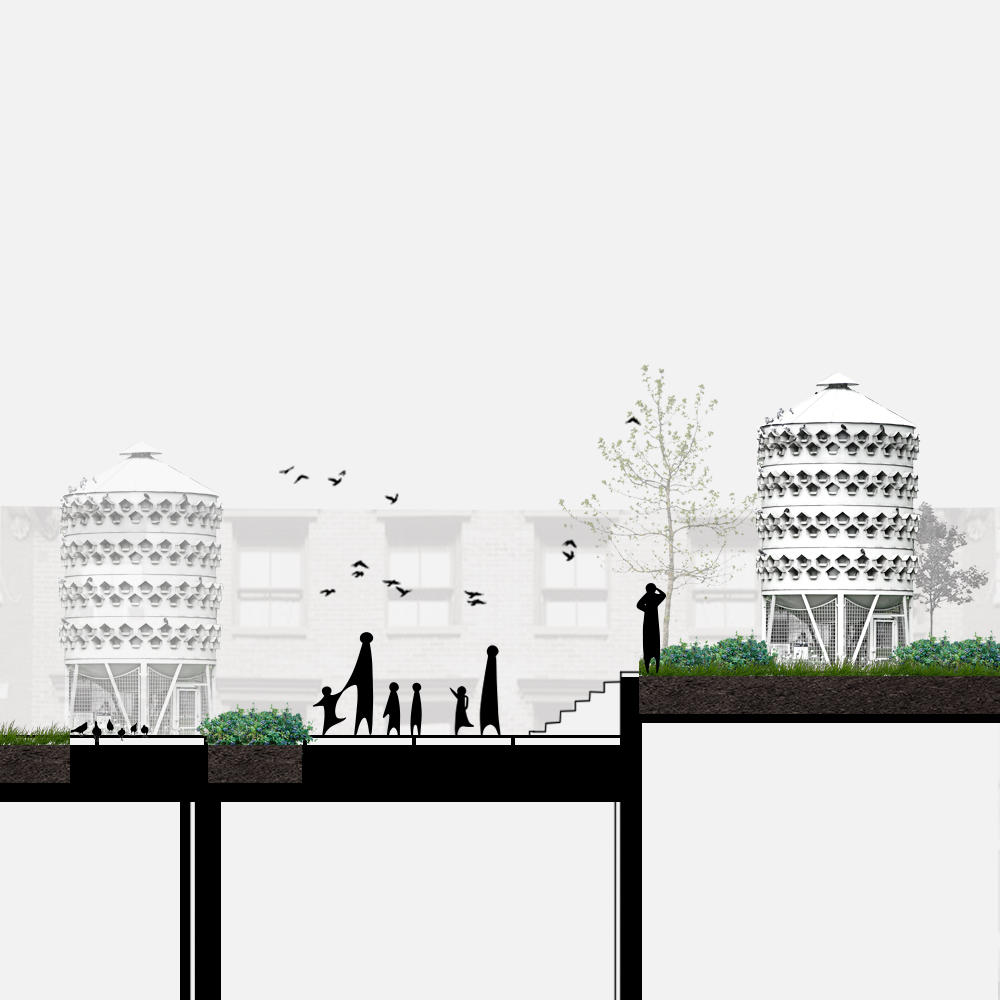
Image
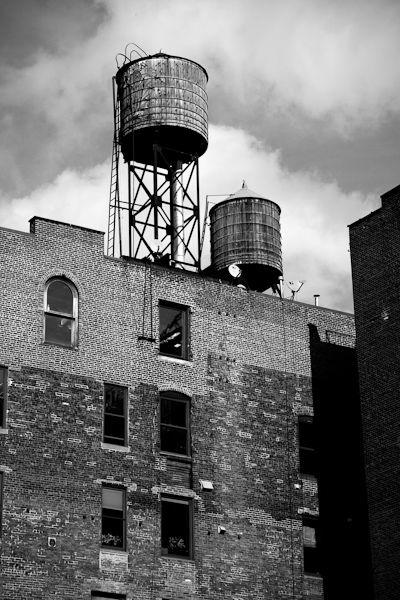
A New Strategy for Pigeons
In addition to the strategies in chapter two on how to attract birds and how to promote interaction, a new strategy for pigeons is proposed in chapter three as a start point for humans to accept pigeons in city conditions.
The Shape of the Pigeon Loft
Water Tanks in New York City
Tanks were placed on rooftops because the local water pressure was too weak to raise water to upper levels. When construction started to grow taller, the city required that buildings with six or more stories be equipped with a rooftop tank with a pump.
In order not to destroy the skyline of this area, I chose to design the pigeon lofts with the shape of the water tanks in New York City. When these pigeon lofts are placed on these historic buildings, they will not be too separated from the environment. This strategy will allow people to adapt and begin to recognize the existence of the pigeon lofts from a visual point of view.
Image
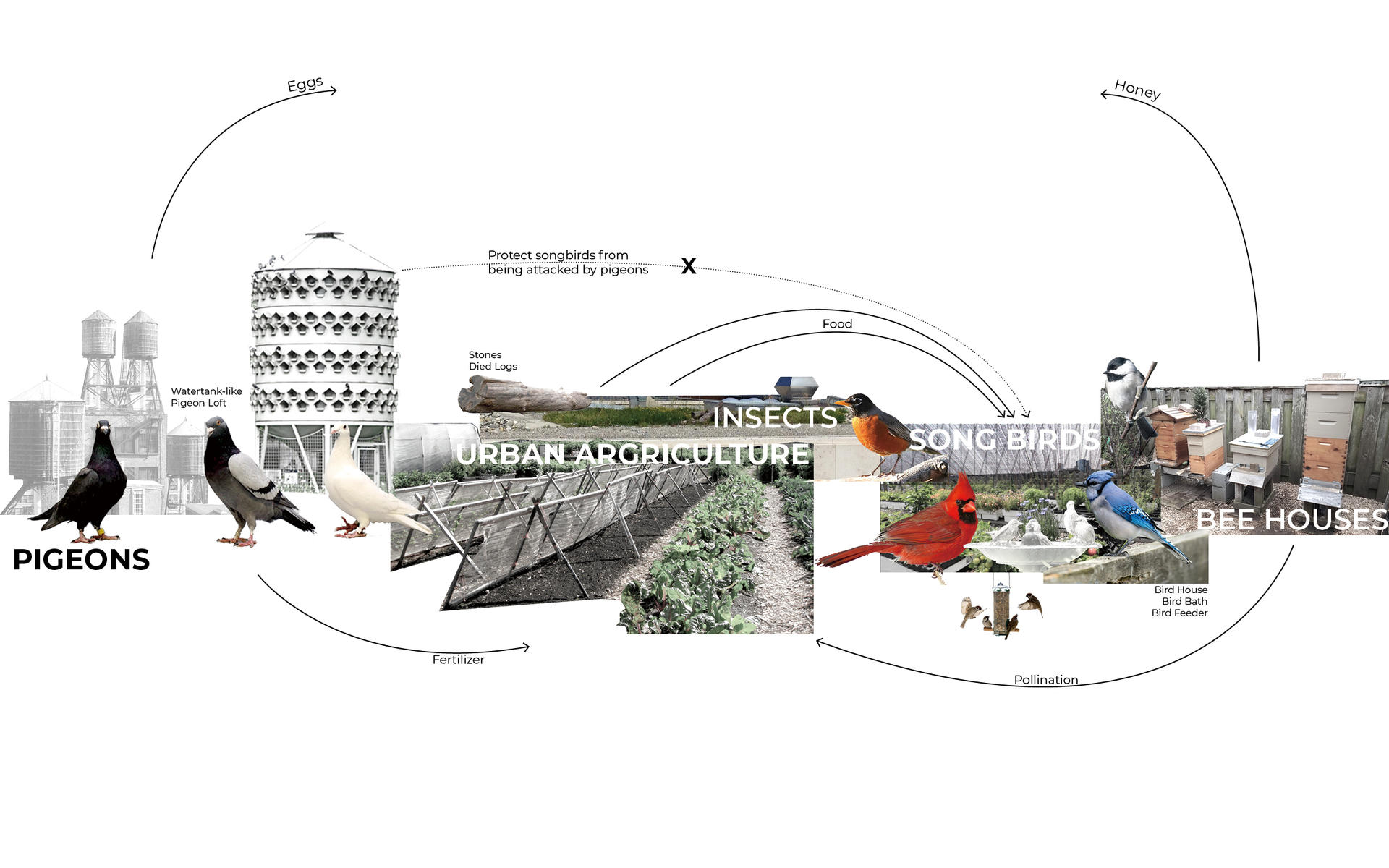
Ecological System on Rooftops
A Social Ecological Approach
In order to let pigeons become comprehensively acceptable for people, formal strategies are not enough. Therefore, I proposed this aerial ecosystem to bring educational and economic significance into this project. By letting community members participate directly into this project , this aerial ecosystem takes social ecological methods to better solve the problem.
The operation of this system requires a large number of volunteers or participants, and the residents in this place will have the right to own a piece of land on the roofs. They will have the opportunity to use their areas of expertise to play the different roles required by this ecosystem.
By raising pigeons more systematically, we will also benefit from this. Pigeon poops can be used as fertilizer for urban farms. After the pigeons’ living conditions are improved, pigeon eggs can also be used as food to generate economic benefits. Besides this, it is also a very gentle way to control the population of pigeons.
Image
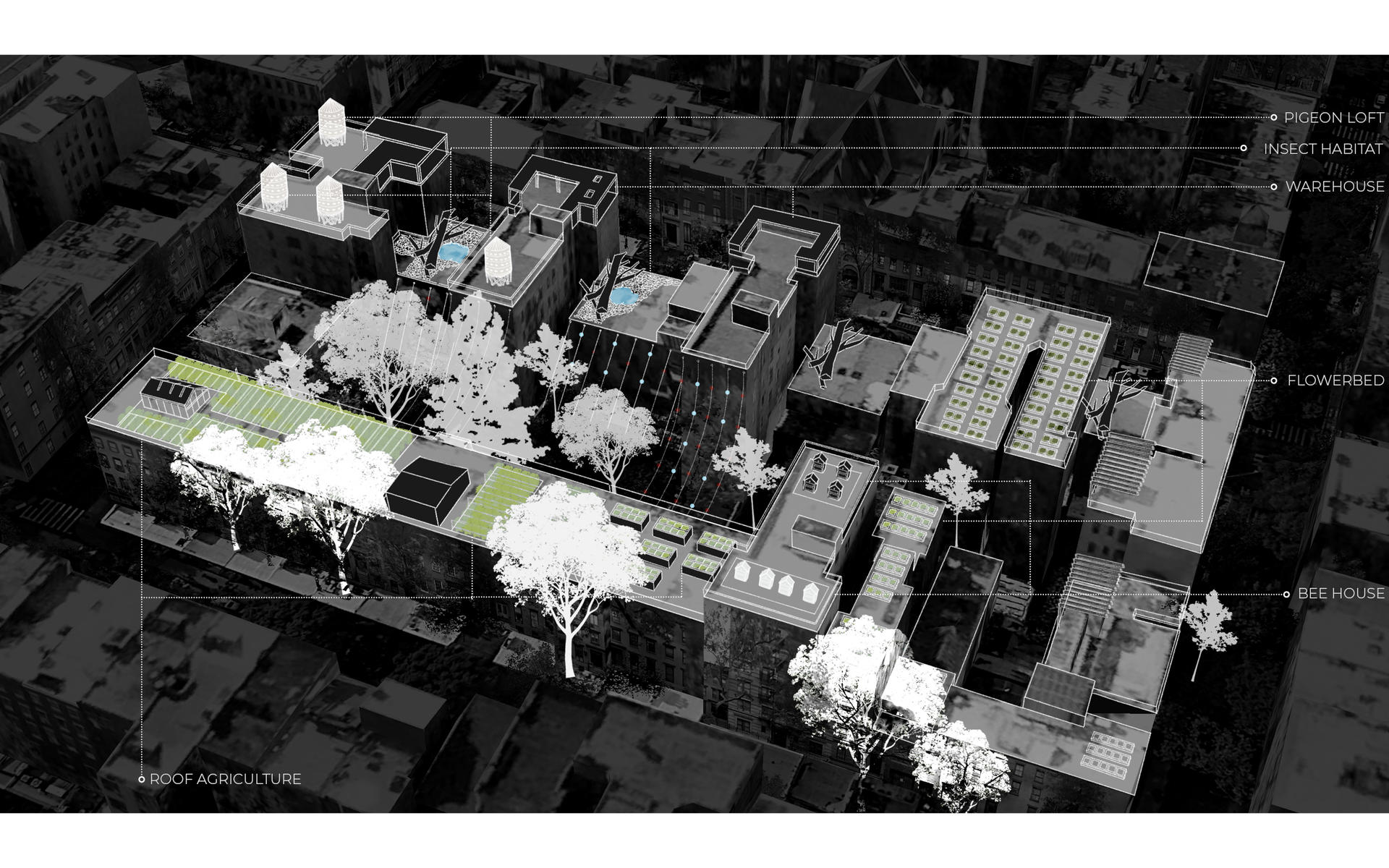
PIGEON LOFTS + WAREHOUSE
Pigeons:
provide eggs, poops as fertilizer
make it easier for pigeon population controlling
Warehouse:
keep eggs,
store equipment
DEAD TRUNK + BOULDERS + DRY SWALE
Dead Trunk & Boulders:
meet insects’ needs for habitats
Pipe:
drain water
BEE HOUSES + FLOWERBEDS
Bees:
pollinate the crops on roofs, provide honey
Flowers:
make sure the livability of bees and quality of honey
Image
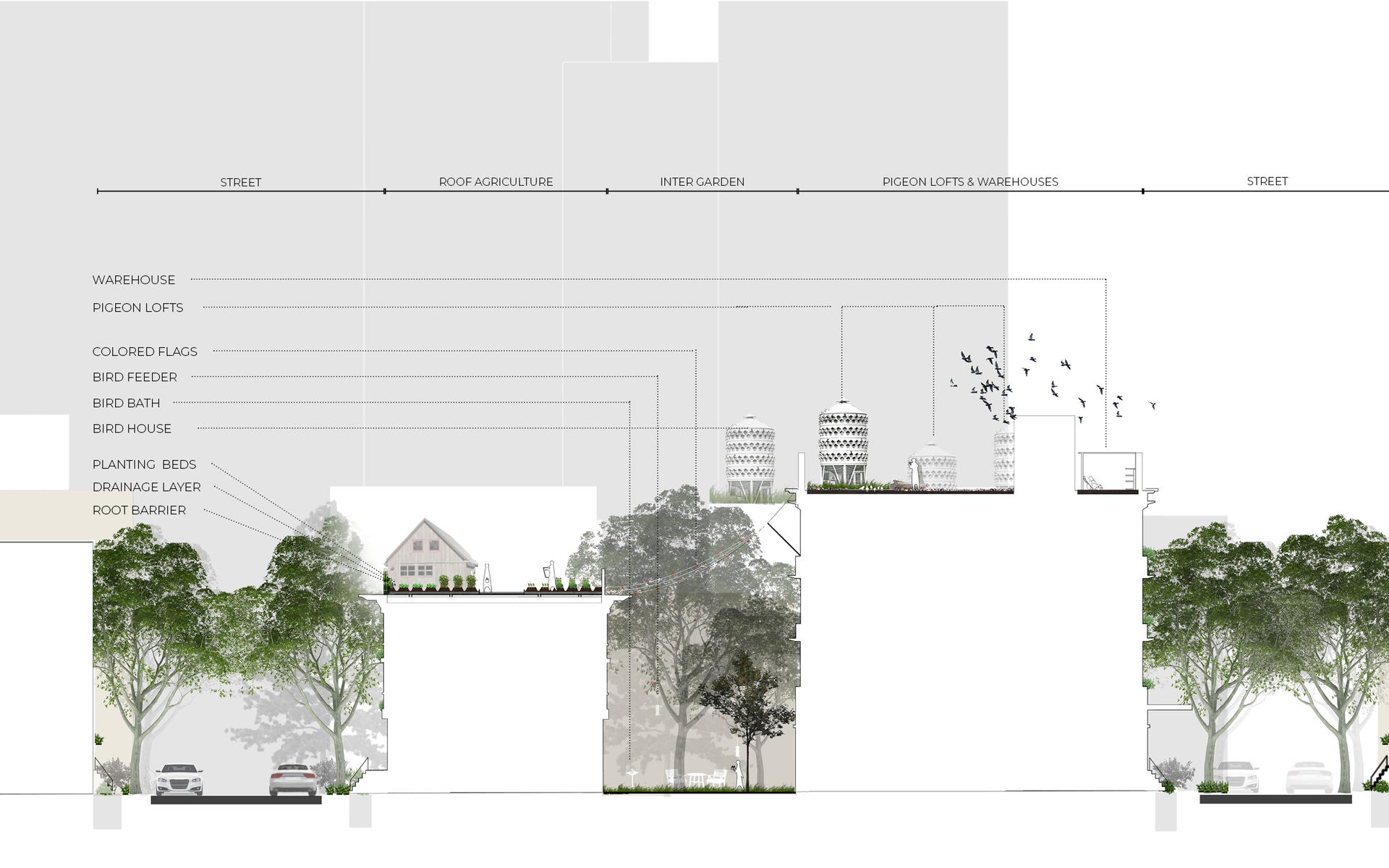
Image
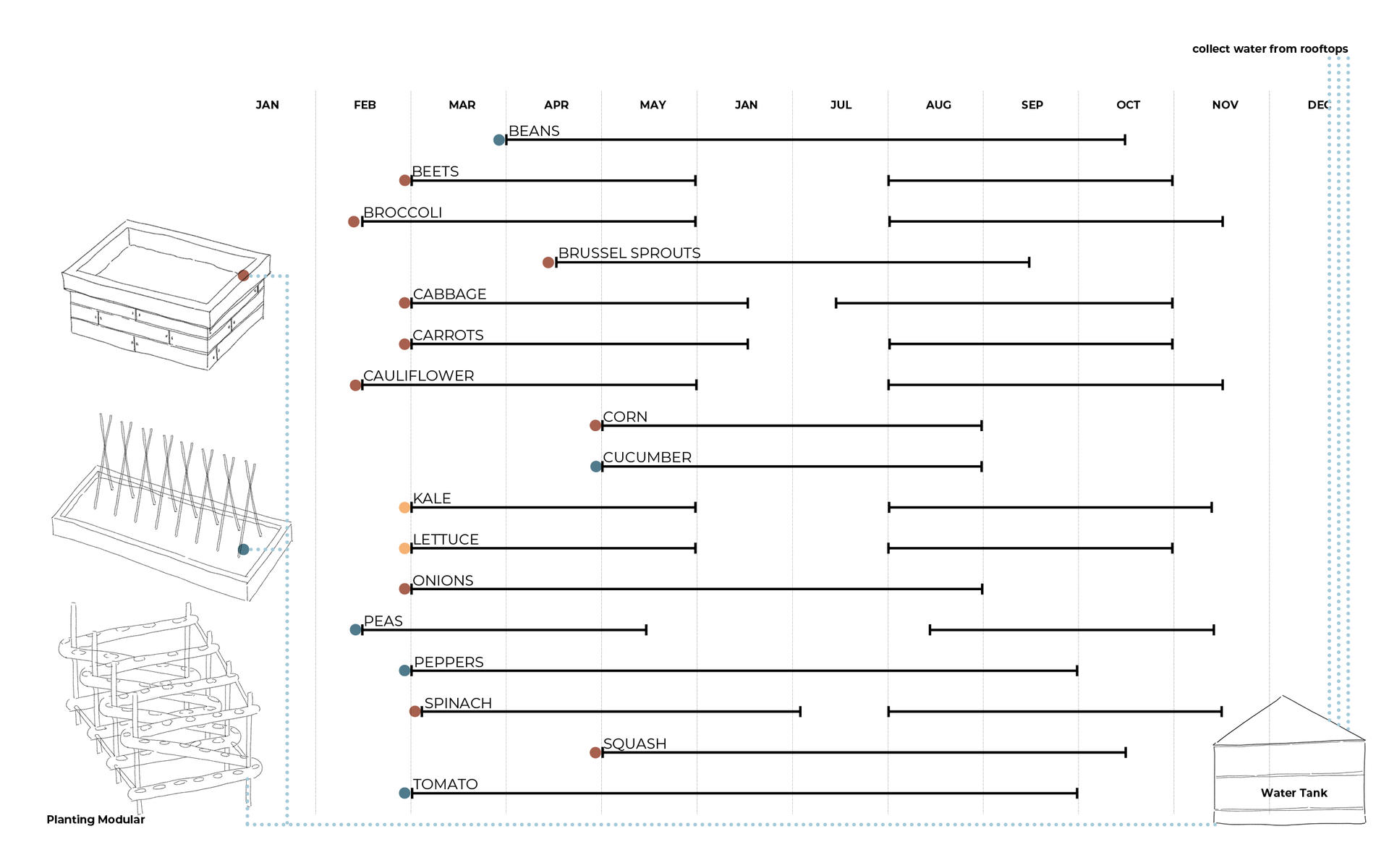
Image
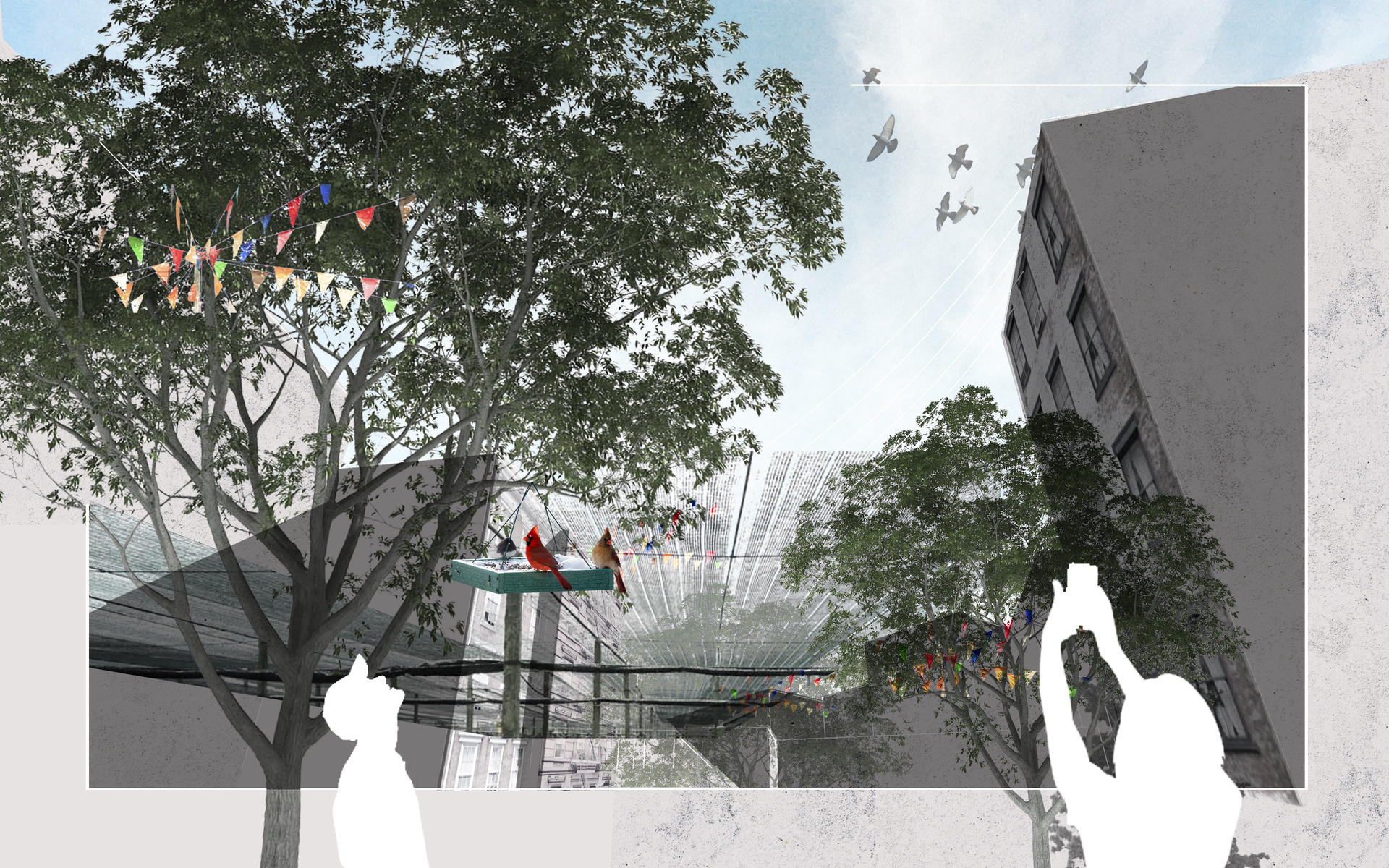
Image
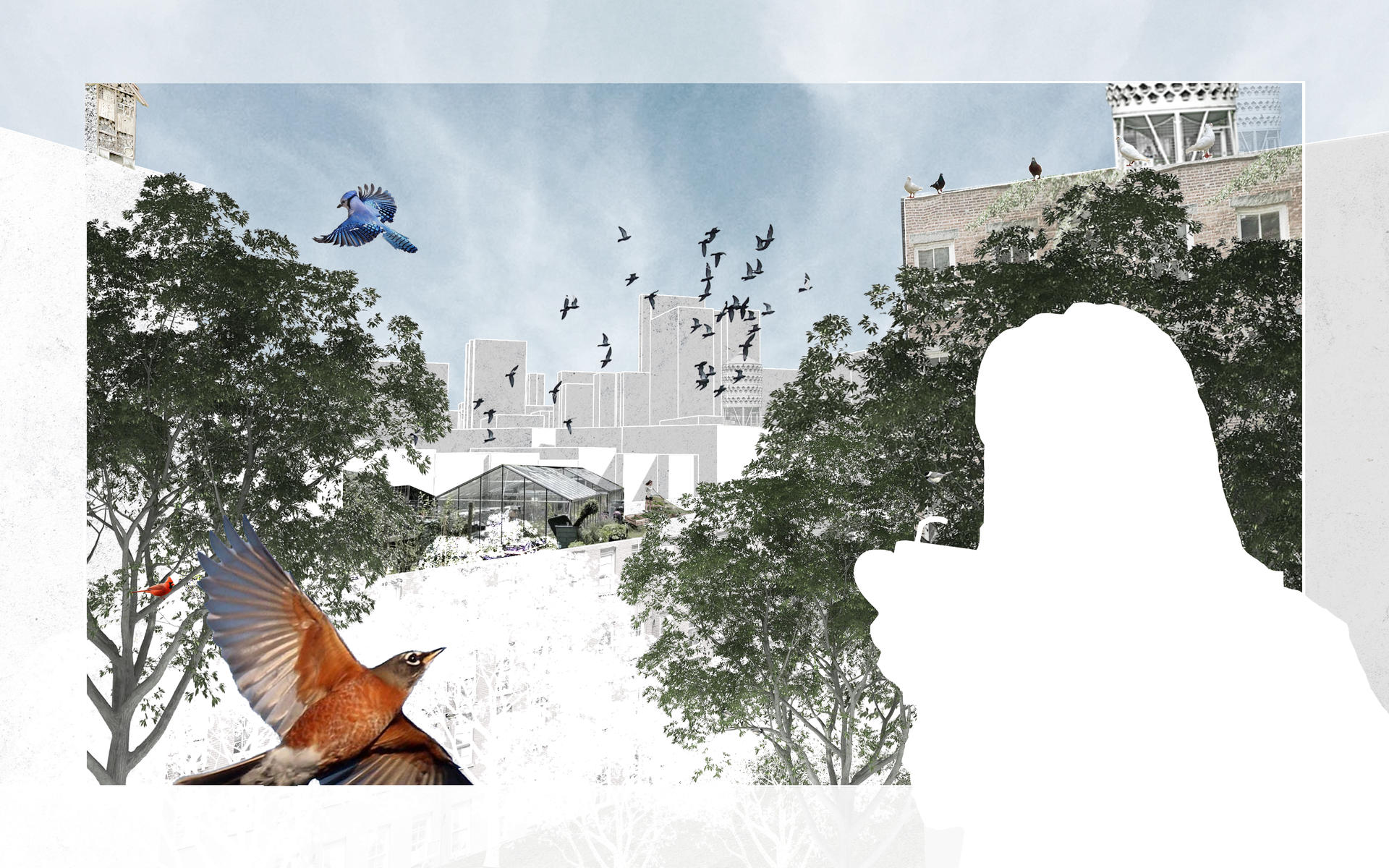
CONCLUSION
During this stage of the design process, I turned my large ambition into a tangible design strategy. Use social ecological methods to maintain the macro urban ecological balance. My goal is to establish a solid bond between humans and nonhumans by letting two parties participate directly. In this way, human beings, as an urban species, can fully integrate into the ecosystem in a positive way.
SYNTHESIS AND CONCLUSION
In these colorful and prosperous cities, our lives are flooded with a lot of information. Sometimes the connection between humans and birds, and even between humans and all non-humans, even the allnon-humans, is weakened. However, these connections are actually still there in narration stories we heard as children and remain deep in our hearts. What we need to do is to find a way to awaken this bond.
At the same time, as a member of nature, human beings are also an important part of the ecosystem. While we are building cities to expand our territory, the impact on the surrounding environment is inevitable. We also need to face these problems directly, and try to solve them actively.
Initially, I used the relationship between humans and birds as a starting point, looking for a coexisting way for the two parties. As the design progressed, I gradually realized that if I want to find a balance between the two, it is not enough to only focus on birds and humans. Therefore, in the subsequent process, I added other elements such as plants, insects, and water. In addition, in order to maintain the operation of this aerial urban ecosystem, I also consider some educational significance and economic benefits.
In addition to Manhattan, there are many places with similar conditions and facing similar problems. I hope this project can make us think. As humans living in cities, what should we do? What will the lives in cities be like in the future in an ecological way? It may start with a private bird feeder, and then your neighbor may install a bird bath. Gradually, the community may start to have community farmland to provide food for these beautiful creatures. When this attracts wide attention, we will have money and permits to build up pigeon lofts, bee houses and other small-scale ecological environments to make this system more cohesive..
This project seems to be complicated by various policies and rules, and it is a project that is difficult to build overnight. However, this idealized connection and symbiotic relationship between humans and non-humans should be our goal to move toward. In the ever-expanding city, we must never lose our curiosity and attention to the surroundings. And we must never be blocked by excess information in our lives and cut off our contact with those precious things.
ANNONTATED BIBILOGRAPHY
-
Aurbach, Laurence, and Laurence Aurbach. Ped Shed, November 30, 2006. https://pedshed.net/?p=12.
-
Bammer, Angelika. Partial Visions: Feminism and Utopianism in the 1970s. Bern: Peter Lang, 2015.
-
“Famous Pigeons.” Pigeon Racing Pigeons, February 6, 2010. https://pigeonracingpigeons.wordpress.com/2010/02/05/famouspigeons/.&nb…;
Firdevs, Gken. “Integrating Ecosytem Landscapes in Cityscape: Birds and Butterflies.” Advances in Landscape Architecture, 2013. https://doi.org/10.5772/55753. -
Fishman, Robert. Urban Utopias in the Twentieth Century Ebenezer Howard, Frank Lloyd Wright, and Le Corbusier. Cambridge, Mass: The MIT Press, 2016.
-
Foundry, Watson. “Living at Peace with Pigeons.” Earth in Transition, December 24, 2015. https://www.earthintransition.org/2010/10/living-at-peace-with-pigeons/…;
-
Hayden, Dolores. Seven American Utopias the Architecture of Communitarian Socialism, 1790 - 1975. Cambridge, Mass: MIT Press, 1981.
-
Jackson, John B. “A Sense of Place, A Sense of Time.” Oz 8, no. 1 (1986). https://doi.org/10.4148/2378-5853.1111.
-
Jennings, Chris. Paradise Now: the Story of American Utopianism. New York: Random House, 2017.
-
Mayntz, Melissa. “These Are Some Hazards That Migrating Birds Face.” The Spruce. Accessed May 28, 2021. https://www.thespruce.com/threats-to-migrating-birds-386307.
-
Partridge, Dustin R., and J. Alan Clark. “Urban Green Roofs Provide Habitat for Migrating and Breeding Birds and Their Arthropod Prey.” PLOS ONE 13, no. 8 (2018). https://doi.org/10.1371/journal.pone.0202298.
-
Pepper, David. “Utopianism and Environmentalism.” Environmental Politics 14, no. 1 (2005): 3–22. https://doi.org/10.1080/0964401042000310150.
-
Picon, Antoine. “Notes on Utopia, the City, and Architecture.” Grey Room 68 (2017): 94–105. https://doi.org/10.1162/grey_a_00222.
-
Sargent, Lyman Tower. Utopianism: a Very Short Introduction. Oxford: Oxford University Press, 2010.
-
Vidler, Anthony. “What Happened to Ecology? John McHale and the Bucky Fuller Revival.” Architectural Design 80, no. 6 (2010): 24–33. https://doi.org/10.1002/ad.1159.
-
“View of Visualizing Bird Migration with Animated Maps: Cartographic Perspectives.” View of Visualizing Bird Migration with Animated Maps | Cartographic Perspectives. Accessed May 28, 2021. https://cartographicperspectives.org/index.php/journal/article/view/151…;
-
Zamalin, Alex. Black Utopia: the History of an Idea from Black Nationalism to Afrofuturism. New York: Columbia University Press, 2019.

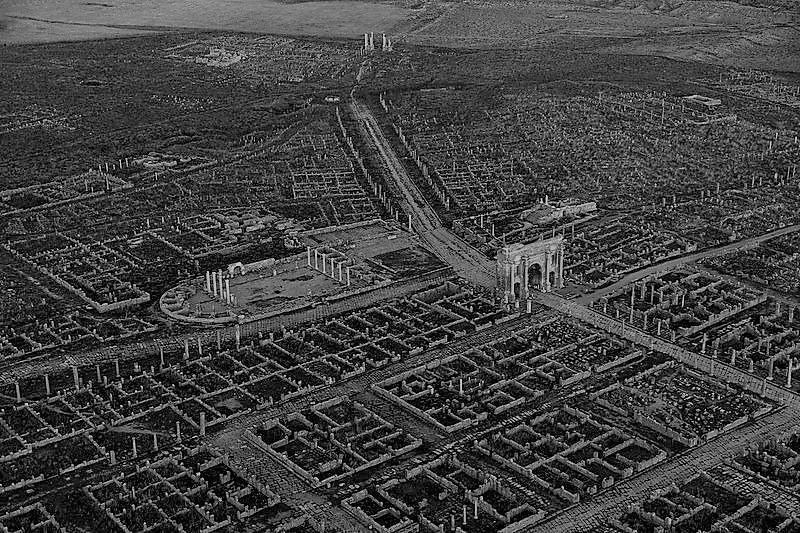
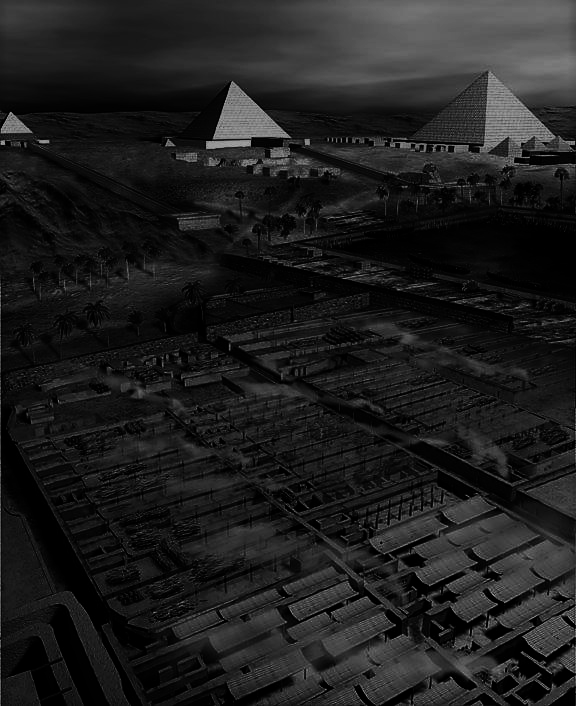

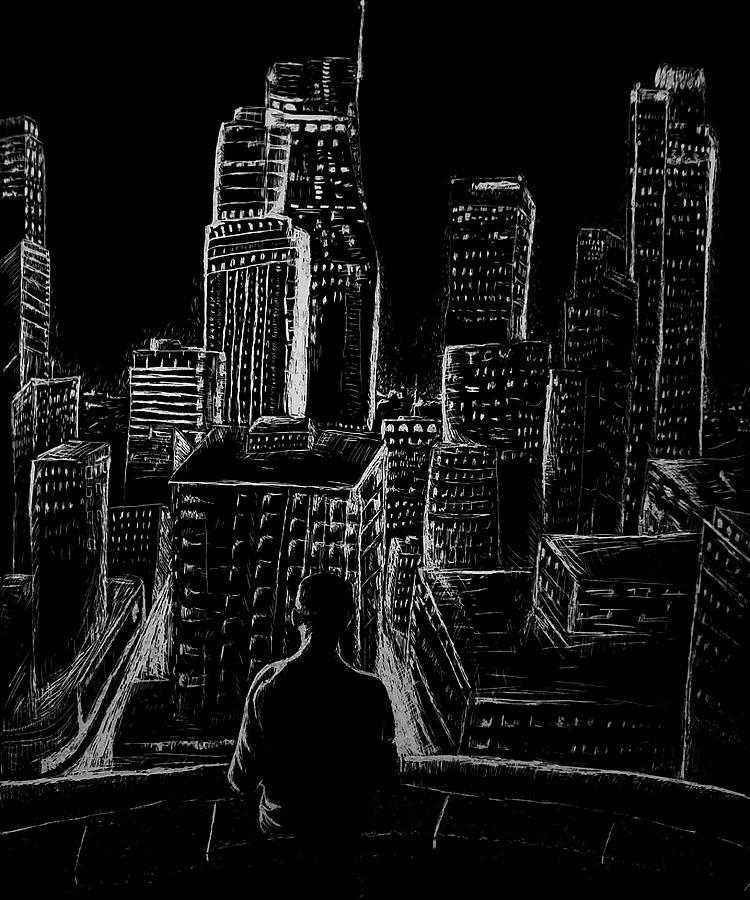
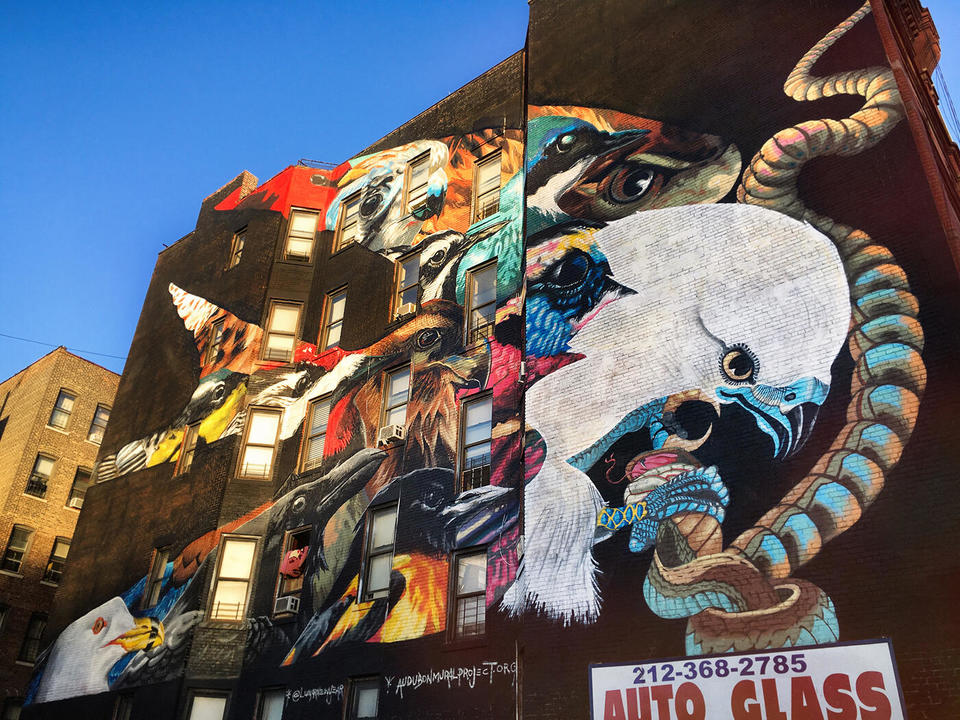
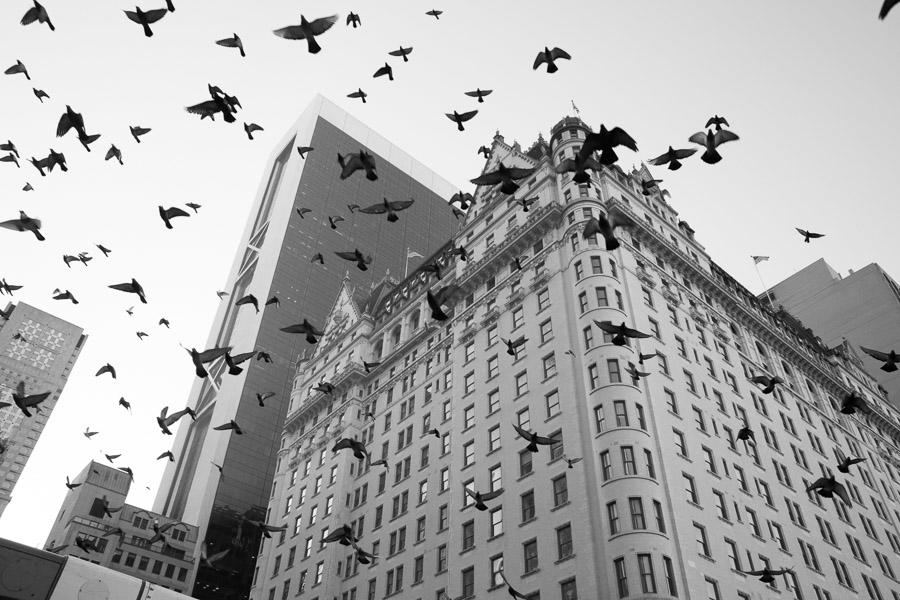
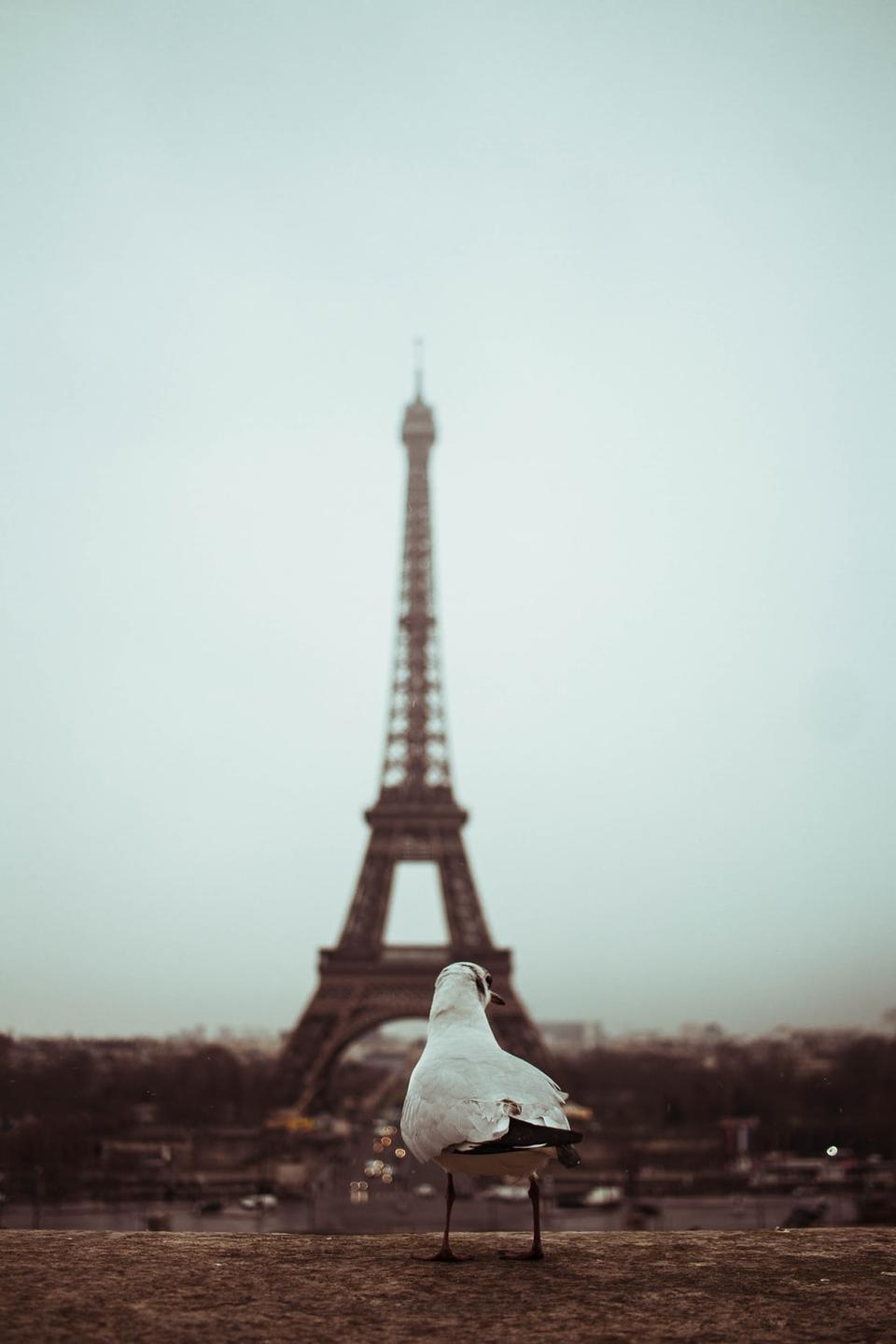
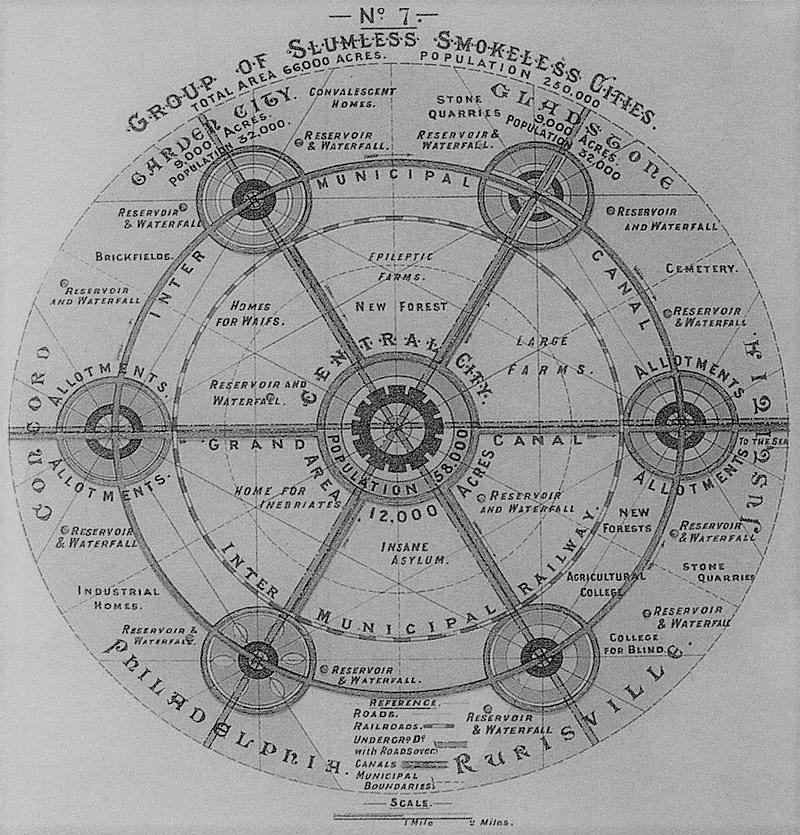
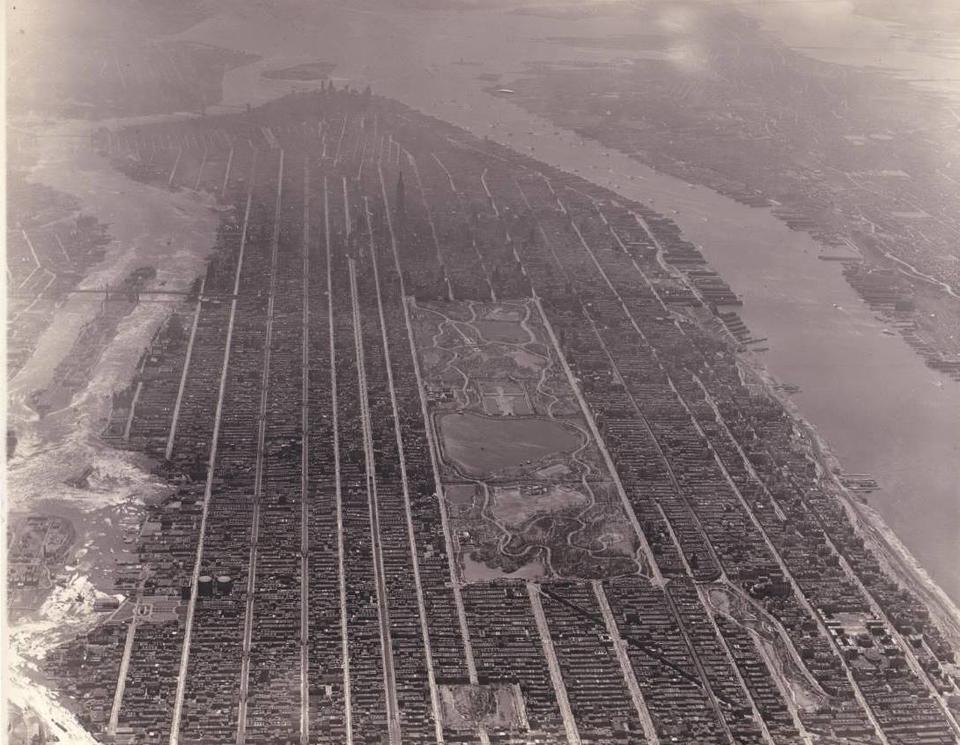
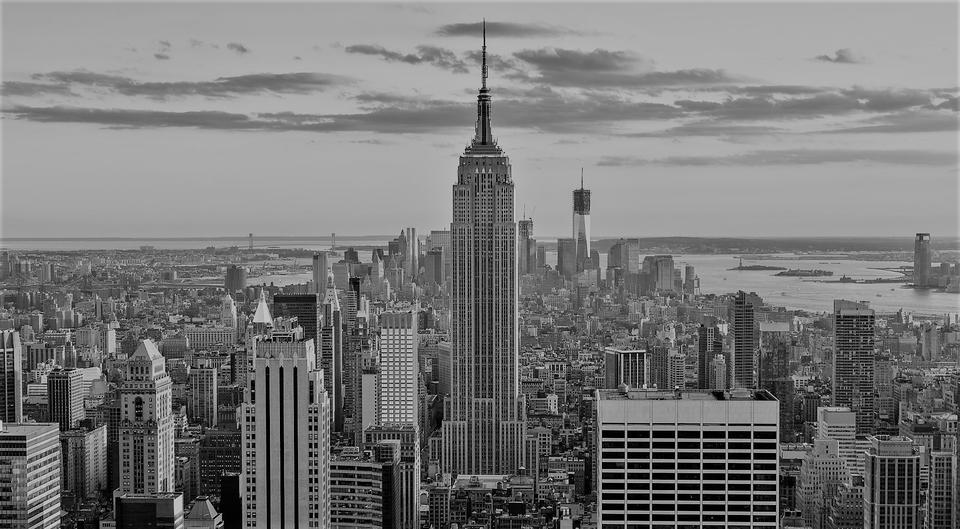

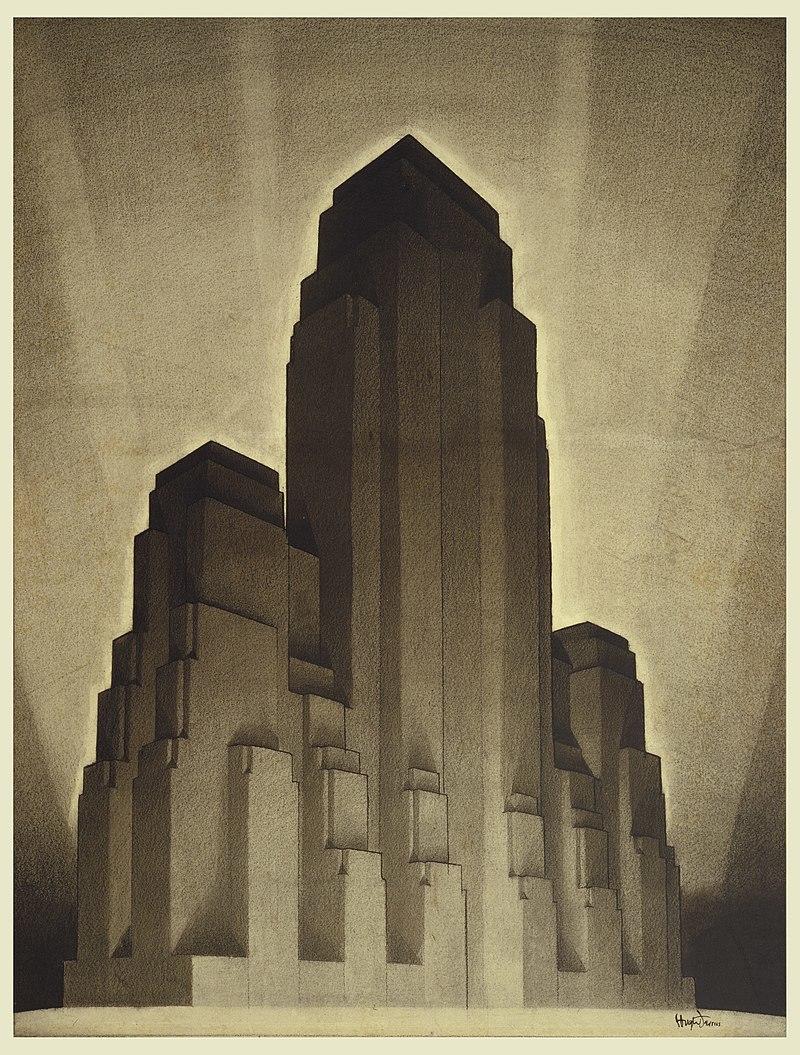
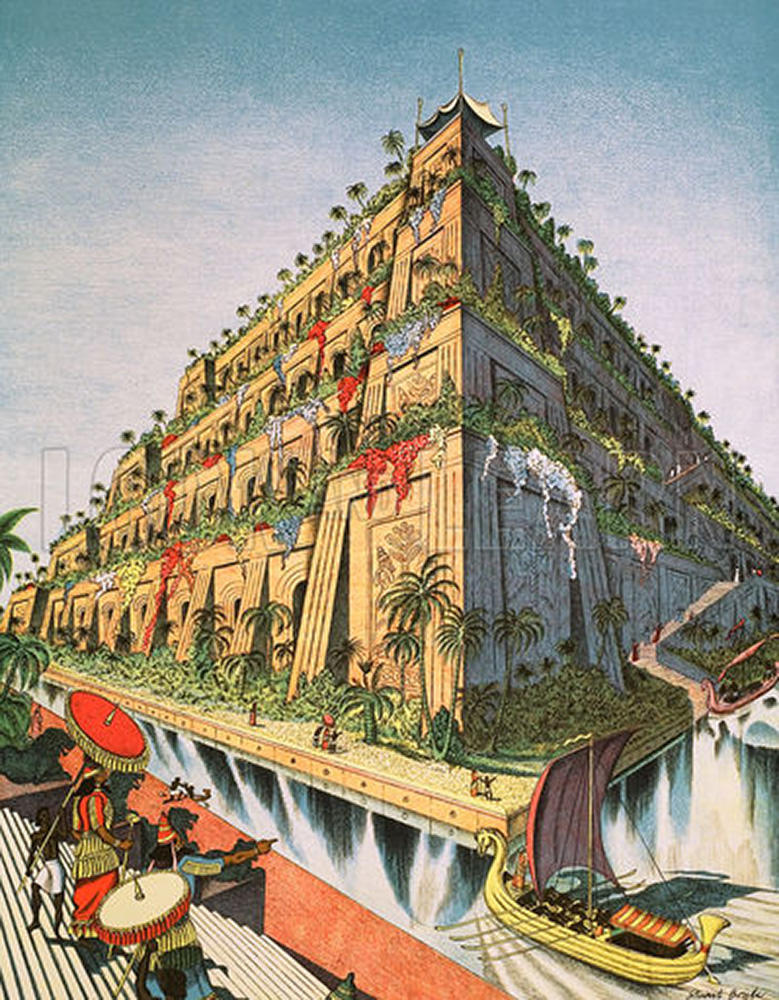
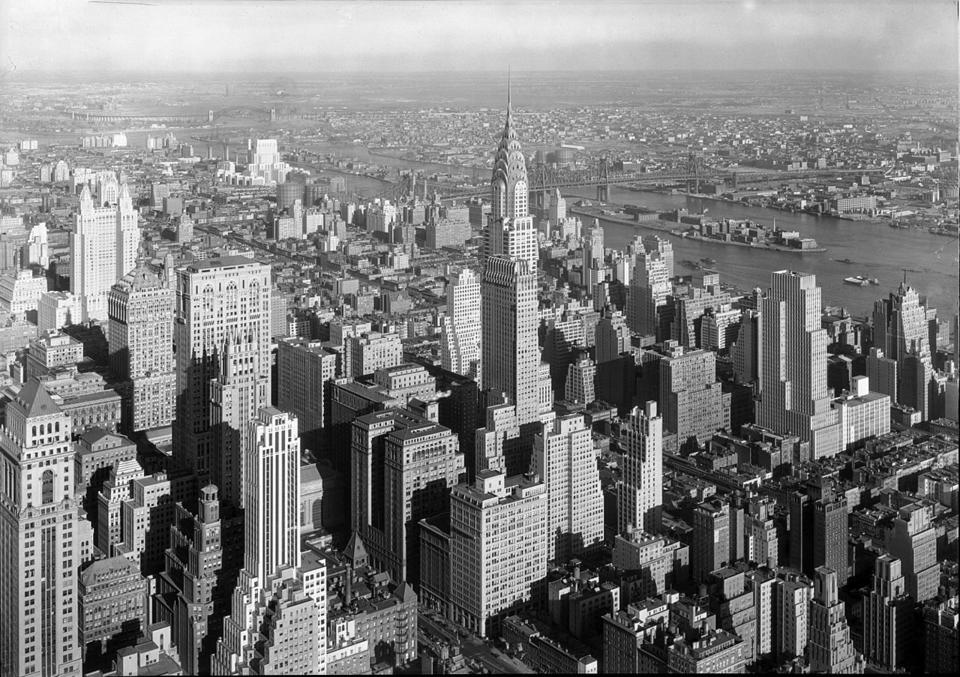
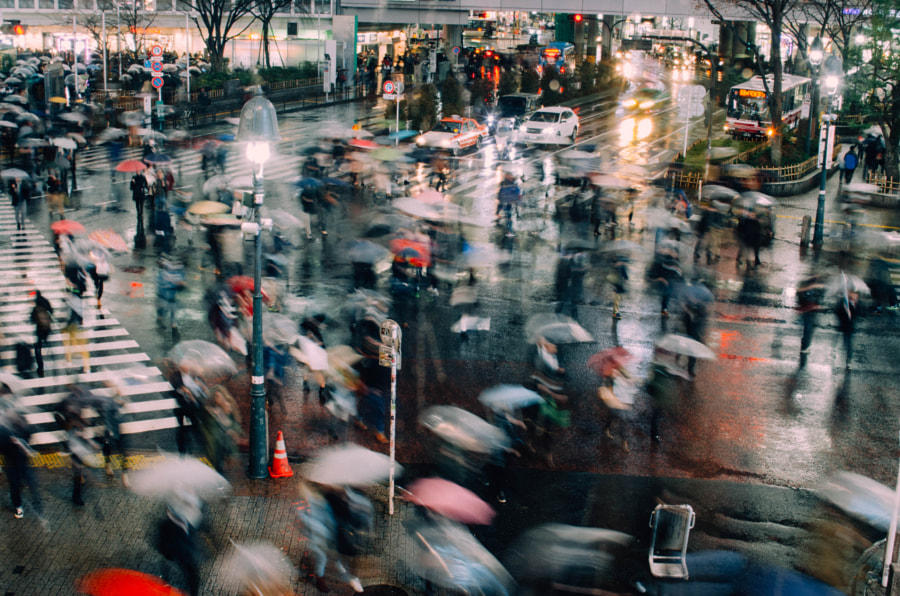
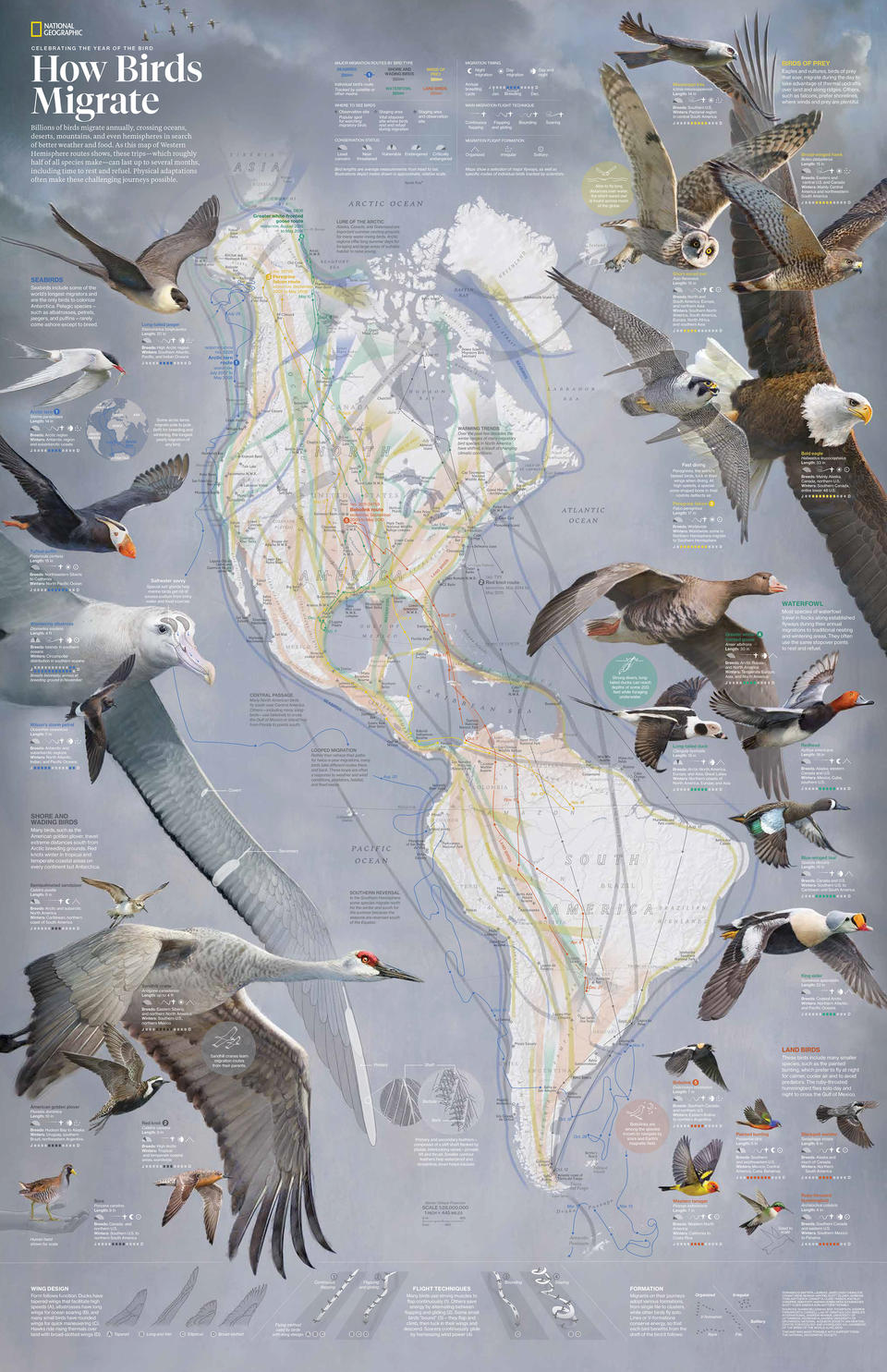
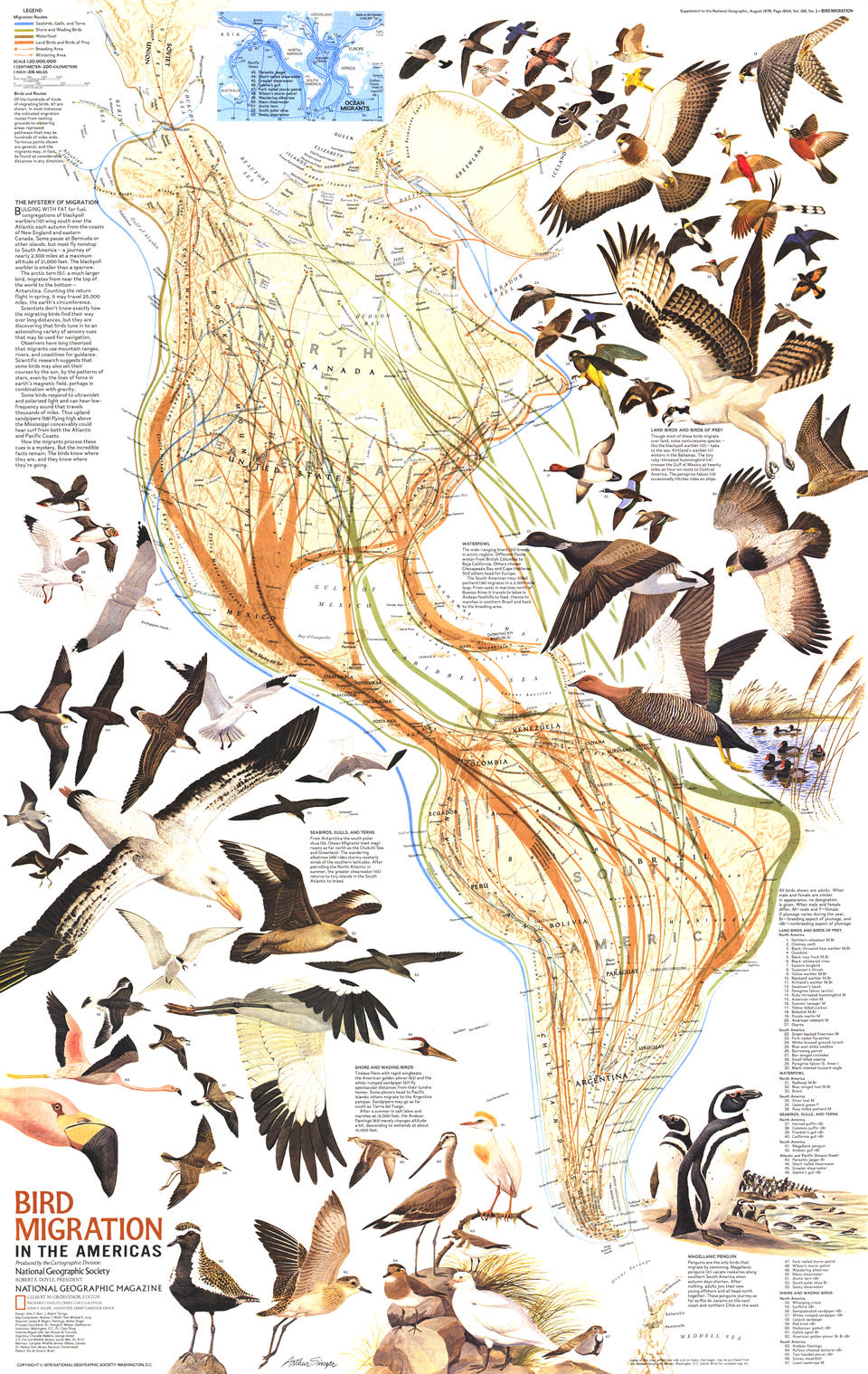
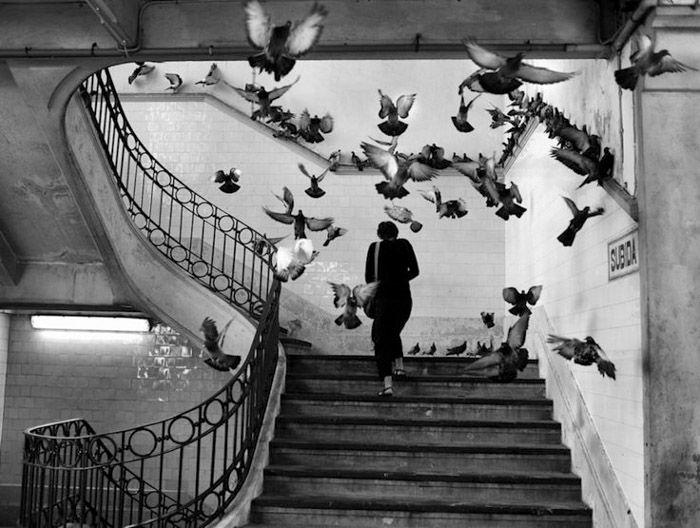
![Photo: Shoe Shine Boy[Mickey at a rooftop pigeon coop.] by Stanley Kubrick, 1947](/sites/default/files/styles/half/public/2021-06/Stanley%20Kubrick.%20Shoe%20Shine%20Boy%20%5BMickey%20at%20a%20rooftop%20pigeon%20coop.%5D%2C%201947.%20Museum%20of%20the%20City%20of%20New%20York..jpg?itok=JPMeSEZC)
